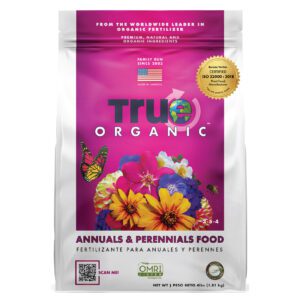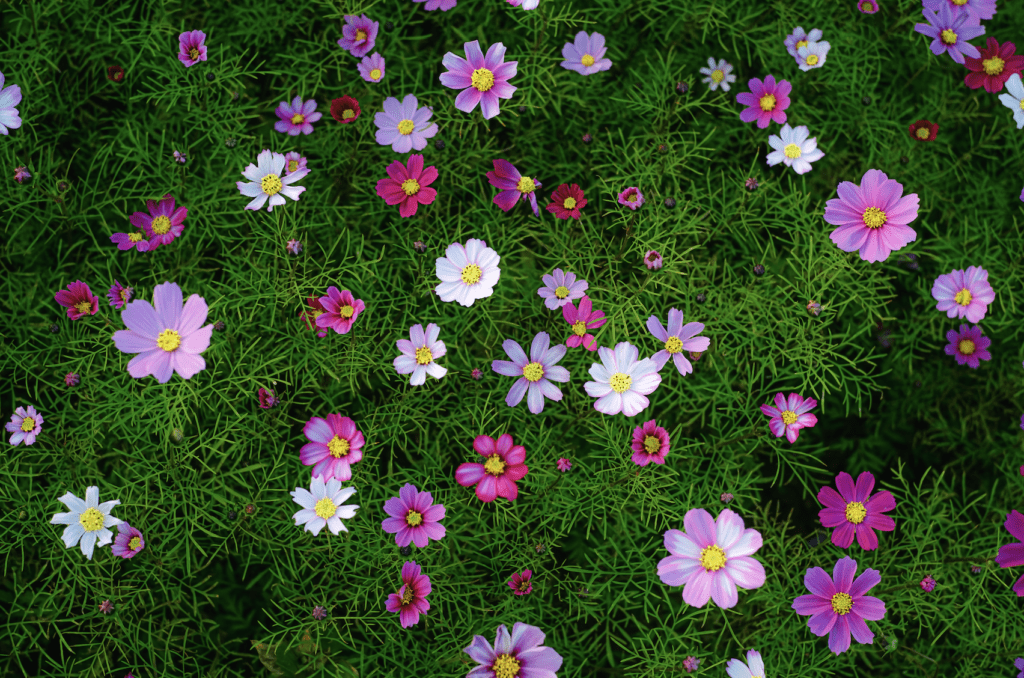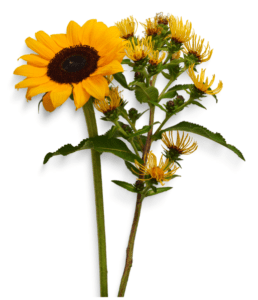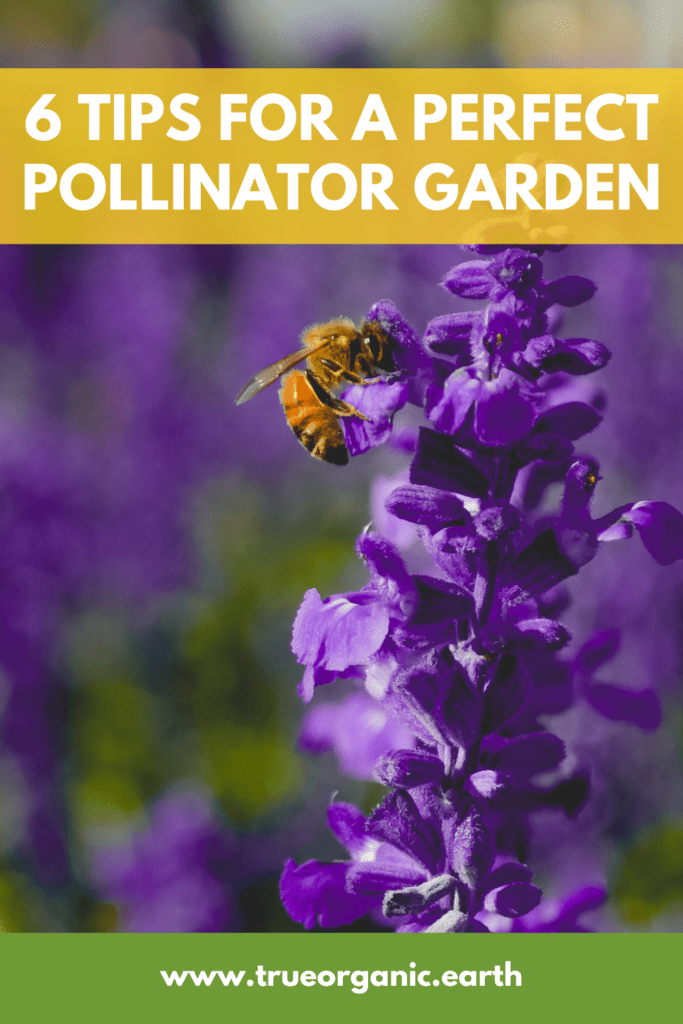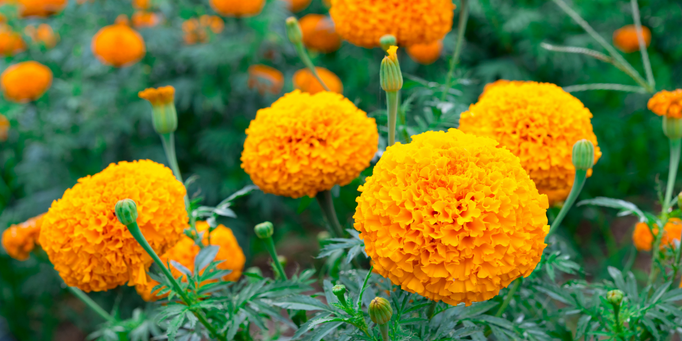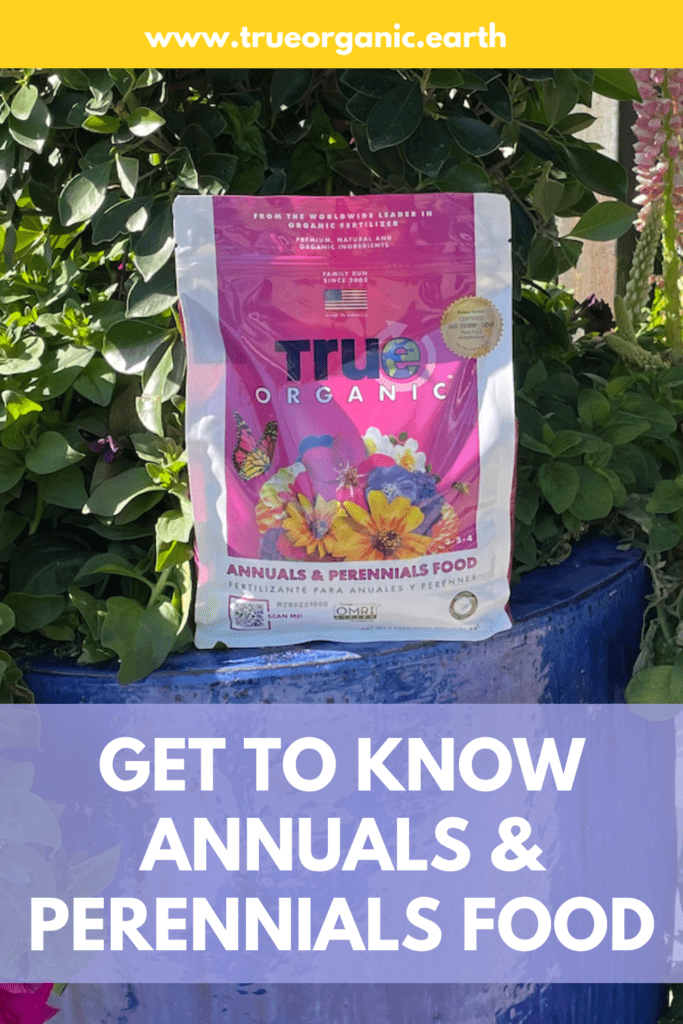Does Your Garden Need Prilled Sulfur?
July 10, 2023
Chancy Lanier
Does Your Garden Need Prilled Sulfur?
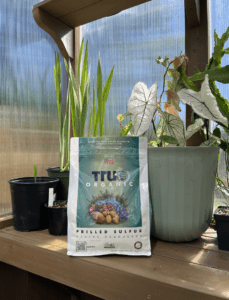
Prilled Sulfur may be your new best friend.
Single-ingredient granular plant foods are an extraordinary way to boost your unique garden’s abundance and to get more familiar with the nitty gritty of soil and plant health. Ready to level-up your gardening prowess?
Our organic single-ingredient foods like Bone Meal, Blood Meal, Seabird Guano, and — our focus today — True Organic Prilled Sulfur.
What is Prilled Sulfur?
Prilled Sulfur delivers necessary sulfates to plants. Sulfur “prills” are small, dry pellets of elemental sulfur that can be easily added to garden soil, whether you’re growing in-ground, in beds, or in containers. Once added to your garden, the sulfur will break down into the sulfate form so that the plants can readily take up the nutrient.
Just like every single True Organic product, our Prilled Sulfur was carefully developed by our team of experts with decades of experience creating and testing fertilizers for large-scale organic agriculture. That means you’re using the very best organic plant food you can get your hands on!
And just like everything else that comes from our food safety-certified plant in Central California, our Prilled Sulfur is totally organic, food safe, and never contains any fillers.
What does Prilled Sulfur do for my garden?
Sulfur is essential for plants, and some need more of it than others (keep reading to find out what plants can most use the support of Prilled Sulfur).
True Organic Prilled Sulfur helps plants in four notable ways:
1) Supplies essential sulfur, in the form of sulfates, to plants
2) Lowers soil pH (makes soil more acidic)
3) Increases micronutrient availability
4) Protects against some diseases and pests.
Lowering soil pH
There are all sorts of reasons the soil in your garden might have a high pH (meaning that it’s alkaline or basic, not acidic), typically because of the natural presence of excess sodium, calcium, and/or magnesium in soil. The pH (and everything else about your soil) is influenced by your geographic location, what kind of activity has occurred in your area (like heavy industry), weather, and so many other factors.
Pest & Disease Protection
Sulfur keeps on giving! Along with helping your garden take in nutrients and grow abundantly, it can protect your garden against pests and diseases — because sulfur is a natural fungicide! It can also repel certain pests like spider mites.
Curious about other single-ingredient plant foods? Learn about the benefits of Bone Meal and Seabird Guano.
Strong Fruiting & Flowering
Prilled Sulfur helps to increase the availability of nutrients in the soil, making it easier for your plants to absorb the nutrients they need to grow and thrive. That means you can look forward to verdant overall growth and beautiful flowering and fruiting.
What’s the deal with soil pH?
Any substance can be measured for pH. Understanding soil pH is an essential part of upleveling your garden game.
Acidity is measured on a pH scale from 1 to 14. 7 is considered neutral pH. Anything below that is considered acidic, and anything above 7 is alkaline (also called basic). Most garden plants thrive at relatively neutral pH: between 6 and 7.5.
But some, like berries and many flowering perennials, thrive in more acidic soil. Read on to learn which ones!
Pro tip: Isn’t there a way to lower soil pH faster? It’s true that sulfuric acid can immediately reduce soil pH, but we highly discourage using sulfuric acid in your garden as it carries some major health hazards.
What kind of plants thrive in low pH soil?
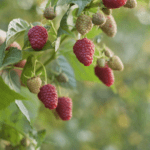
- Vegetables like potatoes, sweet corn, cucumbers, beans, broccoli, turnips, squash, onions
- Berries like blackberries, blueberries, huckleberries and raspberries
- Most fruit trees like fig, cherry, peaches, and apple trees.
- Trees and shrubs like dogwood, beech, holly, oak, dogwood, and evergreens
- Flowers like gardenias, zinnias, azaleas, rhododendrons, hydrangeas, camellias, and daffodils.
Did you know that True Organic makes granular plant food blends specifically for many of the fruiting and flowering crops in your garden? Check out our blends that are tailored to your plants’ needs, like True Organic Berry Food.
How can I tell if my garden needs sulfur?
If you’re growing acid-loving plants, Prilled Sulfur is a sure-fire boost for your garden.
But what about using Prilled Sulfur on soil that just needs a balance due to alkalinity? Besides doing a soil test, you can look for a few signs that your plants are suffering from sulfur deficiency, including yellowing on new leaves (yellowing more mature leaves can mean nitrogen deficiency), stunted growth, poor yield. These symptoms can be the results of other sorts of soil issues, too. So it’s best to test your soil if you suspect sulfur deficiency.
Learn about soil testing for your best garden ever.
How to use Prilled Sulfur in your garden
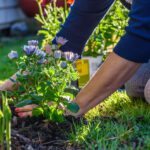
It’s best to add Prilled Sulfur to your garden two weeks before you plant.
Will plants get damaged if you plant them less than two weeks after you’ve added Prilled Sulfur to your soil? Probably not. But it takes some time for soil pH to change as microbes work to break down elemental sulfur into sulfate that the plants can use. It’s worth the wait!
What about sprinkling Prilled Sulfur on top of soil with already established plants? It’s not a great idea. Excess sulfur can damage plants stems and leaves, not to mention that digging and mixing where plants have already established themselves is just a little bit rude.
Be patient and plan well, and your garden dreams can become reality.
Pro tip: Be sure you’re storing your Prilled Sulfur (and any other plant food) properly.
Show us your True Organic Plants
#GrowWithTrue
www.trueorganic.earth
Stylish, Space-saving Vertical Gardening at Home
June 23, 2023
Chancy Lanier
Stylish, Space-saving Vertical Gardening at Home
The benefits of vertical gardening are plenty. Not only does growing vertically increase yields, many plants are healthier in a vertical set-up, too. With stems and leaves off the ground, leaf surfaces get more sun and the air circulation around your plants will be optimized, meaning your plants grow robustly and will be less susceptible to disease.
The best part of growing upwards? You can stand up while gardening! Goodbye, achy knees.
Vertical gardening continues to gain popularity as more and more people live in cities and apartments, and want to garden in smaller spaces. And if you have an outdoor space, a trellis or living wall can be a gorgeous addition.
Let’s check out some popular and creative vertical gardening techniques and tips on how to grow your own sky-high garden.
Trellis gardening
Probably the most common and definitely the simplest, lowest-effort vertical growing technique is trellis gardening. Trellising is an awesome option for people with a small yard or garden beds who want to grow big, bodacious plants in a tight spot. It’s also an incredibly versatile technique.
Trellis gardening means training plants that are rooted in soil (or a container on the ground) to grow on a support structure, which is usually staked into the soil near the base of the plant.
Trellises are typically made out of wood, metal, or even recycled material, and come in all varieties of shapes and sizes. Trellises can be tall or small, arched or straight, many-sided (pyramids and obelisks are popular trellis shapes) or simple. A trellis can be made simply from two upcycle wooden dowels and a stretch of chicken wire fencing. Just sure to build or select a trellis that is strong enough to support the weight of the plant.
Plus, trellises are simply gorgeous! They can help you create a curtained colorscape of blooming flowers or a tidy way to grow your magic beans up to the stars. In fact, many plants (both flowers and foliage plants) need to be trellised or “caged”, like tomatoes of all kinds, beans and peas, some types of cucumber, and grapes, of course.
Looking for more ways to help bees and butterflies? A trellis is a great spot for some pollinator plants.
As far as flowers go, a colorful trellis archway of drooping bougainvillea, roses, or wisteria is a classic garden dream. Trellises can also provide shade and privacy, making them a great addition to patios, decks, or balconies.
Tower Gardening
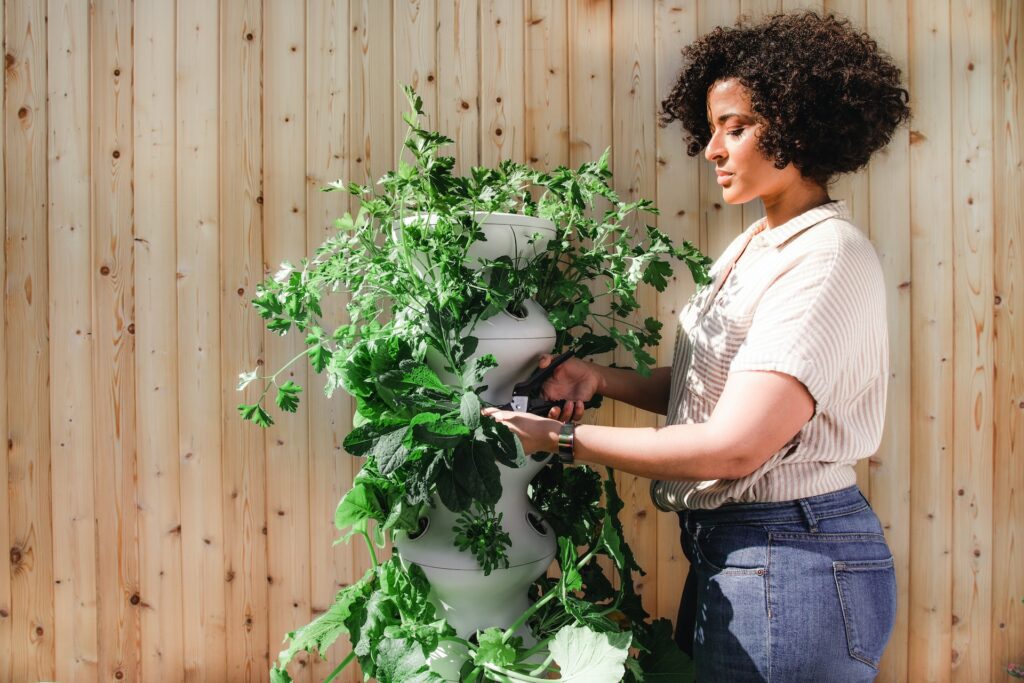
Tower gardening is a great option for those with limited space, as it allows you to grow a large number of plants in a small area. It involves growing plants in a tower or other vertical structure, typically with multiple tiers, each with a separate planting area.
The difference between trellis growing and tower growing is that your towered plants will be planted in sections of soil that is not in the ground. For example, a popular homemade tower garden technique is to stack a few all-purpose buckets atop one another, cut some holes in the sides and bottom, and fill the central structure with soil (don’t forget the plant food!). Then, a small plant with a small-ish root system like lettuce or strawberries is planted in the holes. Clever and space-saving! But as you can imagine, this technique takes a bit of effort, time, and handiwork.
There are as many ways to build a creative tower garden as there are clouds in the sky; they can be purchased pre-made or made at home using new or recycled materials.
No matter what tower garden container or materials you use, be sure to provide secure support for your structure! Soil, plants, and water get heavy.
Living Walls
Not so different from tower gardens are living walls, also called green walls (in fact, lots of people might call living walls a type of tower garden).
Living walls are just what they sound like! Similar to tower gardens, living walls are planters themselves: they’ve got plants growing right out of them! But unlike tower gardens, they tend to be bigger and are best used for decorative purposes. A living wall can add a beautiful, stylish touch to any indoor or outdoor space.
Sometimes you’ll hear living walls referred to simply by the plant or types of plants growing on them (for example, a succulent wall is a popular wedding or event decor piece). Living walls aren’t the best for growing harvest crops, since they provide almost no support for root systems and plants will grow entirely sideways out of a living wall.
Living walls can be one of the most creative vertical gardening techniques; they’re often made from materials like felt, foam, or wood, with lots of holes or pockets for plants. Like toward gardens, these are best for light-weight plants with shallow root systems.
They typically require a special watering system to ensure that the plants receive adequate water and nutrients, so they are also the most labor intensive kind of vertical gardening. A liquid plant food will be the easiest application option for a living wall or tower garden.
Grow for the stars!
Vertical gardening is an awesome way to maximize your growing space and add a decorative touch to your home or garden. Whether you have limited space or just want to try something new, vertical gardening is a fun and innovative way to grow plants.
Trellis gardening, tower gardening, and living walls are just a few ideas to get your started. When it comes to vertical gardening, the sky’s the limit.
Show us your True Organic Plants
#GrowWithTrue
www.trueorganic.earth
7 Health Benefits of Indoor Plants
June 15, 2023
Chancy Lanier
Health Benefits of Indoor Plants
We all rely on plants to stay healthy — from the essential oxygen they produce to the nutrient-dense food they provide for humans and other animals. In fact, just being around plants can improve our health and bestow a wealth of benefits on our minds and bodies.
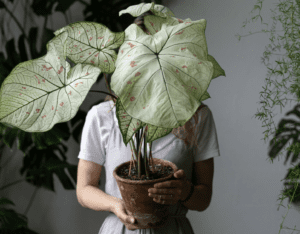
Keeping houseplants doesn’t just add beauty to your home — our indoor green friends can actually bolster our wellness in many ways.
Here’s how houseplants can improve your wellness and your life.
Being around plants soothes our nervous system and reduces stress.
Scientists still aren’t quite sure how or why (it may be related to microbes in soil, oxygen production, simply looking at the color green, or all of the above!) but many studies show that being around plants can help calm the systems in our bodies that produce stress.
In studies, people who spend time with houseplants have less psychological and physiological stress than those who didn’t. These types of studies look at activity in the sympathetic nervous system (the parts of our nervous system that controls our “fight-flight-freeze” response).
Being around plants suppresses activity in the sympathetic nervous system and increases the reaction of our parasympathetic nervous system, which activates a “rest and digest” state (including steady breathing, active digestion, and a steady heart rate).
That means that plants can help lower our heart rate and blood pressure, as a 2015 study showed, among other things.
Plants increase our positive emotions.
Many studies have also looked at the emotional response to having plants around us. They’ve shown that houseplants increase our feelings of well-being and calm, while decreasing negative emotional states like depression and anxiety.
Curious about more of the health benefits of being in and around nature? Read all about how gardening helps us stay healthy, both mentally and physically.
Plants elevate our mood and make us happier!
Being around plants (and water, by the way) can make us feel happy, confident, calm, and peaceful. Even being in a room with a cut-flower display has been shown to improve our mood.
In fact, having plants in your office can even improve your workday! Believe it or not, having indoor plants and natural light in an office results in workers reporting more satisfaction, attention, and productivity.
Being around plants improves memory, creativity, and problem solving.
When plants are around, we experience improved attention, creative thinking, and memory. Interacting with plants can also lessen the symptoms and impact of Alzehimers and dementia — although more studies are needed and the greatest impact seems to be in gardening activity.
Just looking at plants helps our bodies heal and recover from illness or surgery — and decreases physical pain!
Having plants around encourages our bodies to recover more quickly and more easily. Studies show that even just having a view of nature through a window can helpfully impact recovery from surgery!
Houseplants improve respiratory health.
We breathe easier around plants. They clean the air of pollutants and give us fresh oxygen for better respiratory health.
Our homes are full of things that can create air pollution and harm our health, from mold to fumes from cleaning products — not to mention air pollution from outside that enters our homes, like vehicle exhaust and wildfire smoke.
A 1989 NASA study showed that certain houseplants can remove cancer-causing chemicals like formaldehyde and benzene from the air! And more newer studies are showing that potted plants can also remove benzene and other chemicals from our air.
Plant helps us feel connected and purposeful.
While studies haven’t quite pinned down exactly why plants impact us so greatly, many researchers and thinkers in this field understand what gardeners, farmers, hikers, and nature-lovers know well: being in and around nature activates our sense of belonging, connectedness, and purpose.
Being with nature is our natural way of living — we evolved with the natural world for much, much longer than we’ve spent disconnected from it. We know that when we’re in an environment without windows or natural light, fresh air, or colorful decor, it just feels bad.
Scientists call that “environmental wellness,” and it’s a big factor of not only our mental health but also our physical health (they’re interconnected, after all!).
“Having contact with plants is an intuitive and nonverbal activity that can provide psychological stability and comfort by stimulating four senses in various ways,” the co-authors of one comprehensive study write.
Plants remind us of nature’s seasons, encouraging us to stay attentive to our own needs for rest, renewal, and natural cycles. With each blossom and fruiting season, we’re reminded that there is always something hopeful and beautiful coming, if we are patient.
Learn about how to cultivate your own health-boosting indoor garden from a houseplant expert!
Show us your True Organic Plants
#GrowWithTrue
www.trueorganic.earth
Plant Food Shelf-life, Storage, & Disposal Dos and Don'ts
May 30, 2023
Chancy Lanier
Plant Food Shelf-life, Storage, & Disposal Dos and Don’ts
You already know that all True Organic Plant Foods are Certified Food Safe, always made with ingredients from nature, and formulated to be best supplements for your home garden. But how much do you know about the shelf-life and storage of our organic, earth-friendly fertilizers? It never hurts to get a little extra advice from the experts when it comes to keeping your plant foods safe, secure, and effective.
We sat down with Mike Menes, Ph.D., our VP Food Safety & Technology, and Margaret McCoy, Ph.D., our Research & Development Agronomist, to ask the most common questions about storing, handling, and disposing of True Organic plant food in the best way. Here’s what we learned.
Storage
How should I store my True Organic plant foods?
Do store your True Organic plant food in a clean, cool, dry, protected place, away from moisture and direct sunlight.
Don’t leave your plant food bags or bottles outside, exposed to the elements.
Always protect your organic plant foods from rain, direct sun, and wild animals. We recommend storing them in a dark place, in a tightly sealed container.
True Organic plant foods are food!
Mike Menes reminds us that all the ingredients used to formulate these top-of-the-line, food safe fertilizers are from nature, for nature: ingredients like sugar beet extract, kelp extract, bone meal, and more. They’re organic (of course), biodegradable, and activated by water.
While everything we make is specially processed to be shelf-stable for years (read on for more on your plant foods’ shelf-life), the ingredients in these soil-supporting formulas have a strong propensity for high biological activity.
Premature exposure to water before being applied in your garden will cause that biological activity to happen in the package. Protecting your True Organic plant food from exposure to water ensures that biological breakdown only happens in the ground, where it can contribute to the overall soil health.
Shelf-life & Potency
How long do True Organic plant foods last? Can they go bad? How can I tell if they’ve spoiled?
Do get familiar with how your plant foods smell and look when you open them — check out the consistency, color, etc. — so that you can tell if something’s gone wrong.
Don’t use a product if it looks or smells questionable. Just like food!
You may have noticed that the bottle or bag doesn’t have an expiration date. Does that mean our products last forever?
When stored properly and protected from environmental pressures like moisture, our plant foods can stay fresh and potent for years. While we can’t know that True Organic fertilizers would come out of a time capsule just as effective as the day they came out of our production and testing facilities in Helm, California, they’re pretty darn stable.
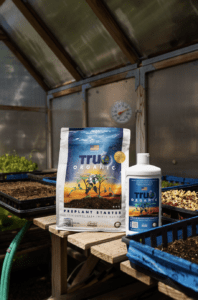
Our granular plant foods are low-moisture to preserve the integrity of their organic ingredients and liquid plant foods are stabilized for long shelf-life. All our fertilizers are intentionally formulated and packaged without the use of synthetic chemicals or preservatives but instead control other physical properties like low moisture content to increase the longevity of the finished product.
When you mix them with your soil and water your plants, that’s when these premium biological ingredients start to break down and feed your plants. Just like your own food, if it doesn’t look quite right — or smell right, or just seems off in any way — toss it.
“We’ve tested our product (that we supply in bulk to big organic farms) that’s been stored for multiple years and seen no significant degradation in NPK values and no contamination by pathogens,” Mike says.
“There can be small degradation over time,” Margaret notes, “but if the product is stored properly, it shouldn’t impact overall performance.”
Keeping it fresh
After a long time in storage (say, over winter) what should i do to prepare True Organic plant foods for use?
Do simply shake the bottle or bag to mix up any ingredients that may have settled.
Don’t add anything (like water). “That’ll change the [nutrient] analysis,” warns Margaret. “Just shake it up to mix the granular food and bring the liquid back into solution. Even if you have some settling in granular food, it’s still valuable.”
What about germs?
Should I be worried about pathogens in my plant food after it’s been in storage?
Do remember that all True Organic products are certified food safe to the highest standard and rigorously tested to ensure that they don’t contain pathogens when they’re packaged.
Don’t give pathogens a chance to come into contact with your plant food!
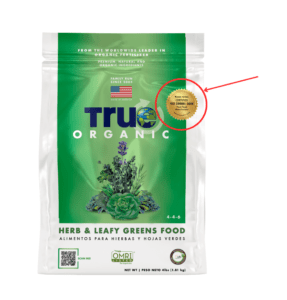
We use a precisely designed heat-process “kill step” to eliminate any pathogens in the process of making True Organic plant food, and each product is extensively tested to be free of pathogens.
Learn about the ins and outs of our food safety certification standards.
So while you can trust that your unopened True Organic bottles and bags are free of pathogens, be sure to store and use your plant foods in ways that protect against contamination. (Read on to discover some ways that contamination might happen, and how to get rid of your plant food if it does.)
Wash your hands and tools before and after use, keep pets and animals away from True Organic products, and return partially used packages to a tightly sealed, clean container.
Wild animal invasions
What should I do if wild animals have gotten into my plant food?
Don’t use any True Organic products if you can tell that animals (like mice, rats, opossums, racoons, or birds) have gotten into them.
Do protect against animal intrusions by storing your organic fertilizer in a container, on a shelf, and/or in an enclosed spot where animals can’t reach it.
Is it okay to use True products after wild animals have gotten into them? Mike and Margaret wouldn’t recommend it — in fact, they’d highly encourage you to toss those products.
“You don’t know what kind of animal got in there, what they’re carrying — so just get rid of it,” says Mike. “It only takes one little bit to contaminate a product (with a pathogen).”
Why would an animal want to eat our plant food, anyway?
“It’s a high protein material with some minerals,” Mike reminds us. “Some ingredients that aren’t really edible — of course, you don’t want to eat gypsum, sulfur — but the protein component could be attractive to animals.”
True Organic plant food is made from materials from nature. Crab shell meal, seabird guano, blood meal, and the like all might be attractive to wild scavengers. Protect your animal neighbors by keeping plant food securely stored.
What about the health of a wild animal that might eat some of your plant food?
“If it does happen,” Mike says, “it is likely not harmful to wild animals that are accustomed to unprotected food sources, and also because these plant foods are mostly made from food ingredients and food by-products.” So there’s no need to call animal services or a wildlife protection agency unless you’re aware that there’s a sick or injured animal in your area.
What about pets? While our products have been manufactured to be free of human pathogens, they’re not meant to be eaten! Always contact your veterinarian and provide them with the product SDS sheet if you’re concerned that your pet got into your plant food.
(Please email hello@trueorganic.earth for the SDS sheet.)
Disposing with the earth in mind
How can I properly dispose of True Organic plant food?

Don’t put it in your home compost pile unless you have an extremely high-functioning compost operation.
If your plant food does get exposed to the elements or you see that animals have snacked on it, the best way to dispose of it is in the green bin.
Fertilizer typically shouldn’t be added to home compost piles, Margaret notes, because the huge influx of nutrients that fertilizer adds can overwhelm the microorganisms in the compost.
(Fertilizer can certainly be added to compost piles as a food source for microorganisms — but it’s essential that the compost is at tip-top functionality with good carbon-to-nitrogen ratio, adequate turnover, proper temperature, and ideal moisture level.)
“We consider our products to be part of the food chain,” Mike Menes says. “We want to try to keep anything we can from going into a landfill,” Mike says.
Everything we do at True Organic, we do with the earth in mind. Our mission is to help gardeners like you restore the soil we all rely on. That’s why we take such great care in developing the most effective plant foods with the most soil-enriching ingredients — and we want to keep those beneficial ingredients in the ecosystem, not in landfills.
About our experts
Read more about our entire R&D Team.
Mike Menes, Ph.D. – VP, Food Safety & Technology
For over 13 years, Mike has been on a mission to formulate fertilizer that makes a difference in the way we grow, consume and improve our bodies and the planet. With a Ph.D. in chemistry, he focuses on food safety and quality lab work. Mike is driven by his pursuit of technological improvements that help detect human pathogens and organic integrity — one of the reasons True Organic is a worldwide leader in organic, pathogen-free fertilizer for commercial farms and, now, home gardens.
Dr. Margaret McCoy, Ph.D. – Research & Development Agronomist
Based in Eastern Washington, Dr. Margaret McCoy is focused on conducting and collaborating on research trials with growers across the Pacific Northwest’s diverse cropping systems. Before completing her Ph.D. from Washington State University in Horticultural, she learned her love for organic agriculture and science from the family farm. She enjoys working with growers to conduct on-farm trials to support industry understanding of nutrient use efficiency based on data gathered from the region.
Show us your True Organic Plants
#GrowWithTrue
www.trueorganic.earth
8 Tips for Growing Perfect Organic Tomatoes at Home
May 21, 2023
Chancy Lanier
8 Tips for Growing Perfect Organic Tomatoes at Home
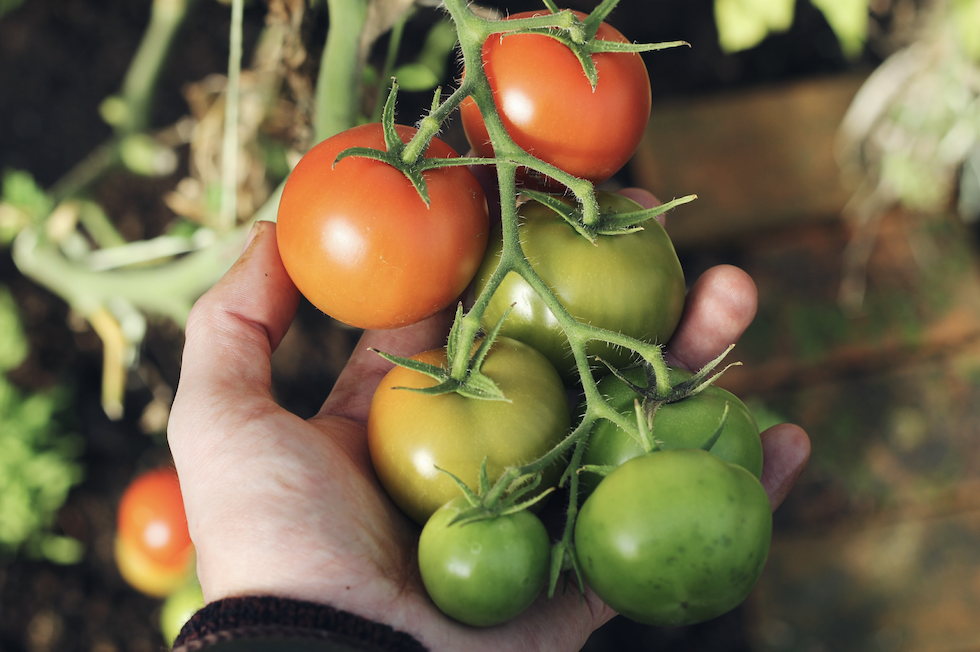
Let’s take a look at the basics of growing organic tomatoes at home to get you set up for success.
 #1: Sun, sun, sun!
#1: Sun, sun, sun!
What you’ve heard is true: tomatoes need lots of sun! At least 6 hours or more of direct sunlight daily is ideal. Any less and your plants won’t produce the harvest you want.
#2: Choose your variety: Determinate or Indeterminate?
Determinate tomato varieties are more short-living plants, will stop growing at a certain size or height, and tend to ripen all their fruit around the same time — making them perfect for canning, freezing, big-batch cooking, and giving away.
Indeterminate tomatoes keep growing into the Fall in many Zones (even until the first frost) and their fruits need longer to ripen. Mostly heirloom varieties, indeterminate tomatoes are the kind that can reach towering heights and will provide you with juicy tomatoes for months. Since they grow so much, it’s a good idea to prune these types of tomato plants for size, yield, and to be sure they don’t take over the garden (unless you have room for that!).
There are also a few varieties in the middle: semi-determinate or dwarf tomato plants aren’t quite one or the other — they are usually on the smaller size, making them great for container gardens, but grow like indeterminate varieties, so it’s a good idea to stake and prune them.
Choose a variety (or a few!) of tomatoes that works best for your planting site and harvest desires.
#3: To prevent common diseases, think before you plant.
Tomatoes can thrive in-ground, in large containers, or in raised beds. What’s best for your specific tomato garden will depend not only on your variety of choice (see above) but also the soil makeup in your garden or yard, your USDA Plant Hardiness Zone, having access to a watering source (since tomatoes need regular watering), and well-draining soil.
Curious about container gardening? Check out our Container Gardening 101 blog to get started on your own small-space garden.
Here are a few essentials pointers for choosing a good site for growing healthy tomatoes:
- Remember that an all-around healthy plant is less likely to be the victim of any disease, so start with attentive nurturance for your tomatoes.
- Ensure good soil drainage. Without properly draining soil, tomatoes are very susceptible to fungal diseases and pests that can wreck your whole crop.
- Depending on your soil content and structure,
- Choose a site with good air circulation. This is a very important factor to help prevent catastrophic tomato disease like blight and fatal fungal diseases.
- Always plant, dig, and prune with cleaned tools to prevent the spread of disease.
#4: Give your tomatoes an organic nutrient boost.
We formulated True Organic Tomatoes & Vegetable Food to give tomatoes and other heavy-feeding plants exactly what they need.
Add organic fertilizer to your soil before planting, according to package instructions, to support new plants. Throughout the season, you can fertilize with our granular formula monthly, depending on your planting site (container tomatoes need less frequent feeding), plant size, and other factors that are impacting your plants.
#5: Support your growing tomatoes.
Staking, caging, and trellising tomato plants is important for all indeterminate tomatoes and even some determinate plants. Create a support structure for your tomatoes right away when you plant them — when they are young, healthy, and adaptable.
As they grow, encourage them to use their support structure, and they’ll grow even more robustly!
#6: The secret to watering tomatoes.
It’s a subject of frequent conversation in the gardening world: How much water do tomatoes really need?
The secret is…well, there really is no secret. Sorry! But in general, tomato plants need about one inch of water per square foot per week. They require consistent watering and you should never let their soil dry out — that can lead to weakness, making them targets for pests and diseases.
It’s best to water in the morning and/or evening and to avoid getting water on the tomato leaves during hot sunny days. During the hottest days of summer, you may need to water two times a day. This is especially true for container-housed tomatoes, since the smaller volume of soil can’t hold as much moisture.
Companion planting can benefit tomatoes not only as a natural pest prevention method (read on for more on that) but also to prevent weeds, aerate soil, and in general support soil health and structure — all things that can make sure soil is well-draining. For companion planting with tomatoes, try: calendula, sage, marigolds, nasturtium, parsley and cilantro, sweet alyssum, and garlic.
#7: Organic pest prevention.
Hornworms, spider mites, aphids, and whiteflies are only a few of the pests that can destroy your tomato harvest. Unlike the ecosystem’s beneficial insects, these little bugs can transmit plant diseases, chew holes in your tomato leaves and fruits, and suck the life out of your precious garden.
To encourage a healthy, biodiverse garden ecosystem, there are a few awesome ways to keep pests away organically.
- Pinch-off: It’s tedious, but for the bigger, non-winged pests like hornworms, you can simply pick off the pests with your fingers.
- Companion planting: Growing pollinator plants near your tomatoes can attract other insects (and birds) that eat those pesky insects.
- Non-toxic pest-blockers like diatomaceous earth can work well against crawling bugs.
#8: Preventing blossom-end rot
We’ve gone over how to protect tomatoes from fungus and pests, but what about the most dreaded harvest-spoiling ailment of them all: blossom-end rot?
Blossom-end rot (BER) starts as a dark, soggy area at the “blossom end” of the fruit and can cause the entire tomato to become a yucky brown lump. It can seemingly arise suddenly in otherwise healthy tomatoes and can be incredibly frustrating!
Learn more about blossom-end rot in other vegetables.
As our R&D Team member Andrew Pedersen shares in this short video, blossom-end rot is a result of calcium deficiency when the fruit was young and can be prevented by making sure you’re watering your plants properly. It can show up when tomatoes are under-watered, over-watered or watered inconsistently, or when there’s an excess of nitrogen or other calcium-blocking minerals in your soil.
Be sure to not over-fertilize as an attempt to cure blossom-end rot! Check out Andrew’s video for a few more tips about the nutrient makeup and plant structure that can help your tomatoes avoid succumbing to BER.
Happy growing!
Show us your True Organic Plants
#GrowWithTrue
www.trueorganic.earth
Mental Health Awareness Month: How Gardening Supports Your Wellness
May 1, 2023
Chancy Lanier
Mental Health Awareness Month: How Gardening Supports Your Wellness
Why does gardening feel so good?
There are so many ways gardening supports our health: from elevating our mood to supporting immunity — not to mention the many benefits of eating fresh, organic food right from the earth.
May is Mental Health Awareness Month and we’re excited to share the impact that gardening has on our mental and emotional health. Let’s look at the different ways gardening is scientifically proven to support health and wellness.
Overall wellness
As doctors and research scientists learn more about how our physical and mental health are linked, we can really start to connect the dots between how gardening (and being outside, in general) supports the healthy function of our bodies and minds — and how those two realms of wellness are connected.
There is growing, clear scientific research explaining how and why a connection with nature is so influential on our health.
For starters, spending time in nature can:
- Lower your blood pressure
- Soothe your nervous system
- Strengthen immune function
- Increase your self-esteem
- Help you build emotional resilience
Since all of these aspects of our health are related, let’s look at the most direct impacts on mental and physical wellness.
 Less anxiety, better mood
Less anxiety, better mood
There are, thankfully, swaths of studies finally proving that spending time in nature can help you feel more calm and help lift your mood, and even ease symptoms of chronic mental health challenges like depression.
Specific research on people experiencing depression shows that, over time, using “therapeutic horticulture” can noticeably reduce the severity of depression after just 12 weeks (and results keep increasing after three months).
Decrease in stress hormones and stress responses
More research suggests that spending time outdoors even reduces cortisol levels, heart rate, blood pressure, and muscle tension — which are all physiologically related to stress, chronic illness, and our general wellbeing, both mental and physical.
Don’t you feel calmer already just thinking about being in the garden? 😌
Beneficial bacteria
Here’s some really cool new research on the positive impact of organic gardening and soil health in particular.
Along with helping to manage the psychological chemicals in our body that are related to our nervous system’s stress response (like cortisol), gardening can actually increase the chemicals that make us feel good! Here’s how:
Since at least 2017, studies have shown that Mycobacterium vaccae, a common soil bacterium (especially present in soil that’s farmed organically), is linked to reduced symptoms of depression and increased serotonin production in our brain — the neurotransmitter that gives us feelings of happiness and modulates anxiety. Along with the emotional benefits, Mycobacterium vaccae has been shown to ease asthma and psoriasis.
Thanks, soil bacteria!
 Physical wellness
Physical wellness
Just being in natural light (and getting needed Vitamin D for our bodies) and breathing fresh air can improve our immune system. And a healthy body supports our mental health, too.
Gardening also provides time to get light to moderate exercise: pushing wheelbarrows, shoveling, digging, and lifting. Getting moderate exercise and healthy movement not only helps us feel confident, but it also reduces anxiety and depression.
Improving concentration and memory
Gardening is related to better brain function and to improved concentration and memory.
Research like this 15-year study study in Australia of older adults have found that daily gardening is also a huge factor in reducing the risks and development of dementia and Alzheimer’s.
While the causes and characteristics of Alzheimer’s are still being studied, it’s thought that gardening stoked our brain functions like learning, dexterity, and problem solving.
Wellness for kids
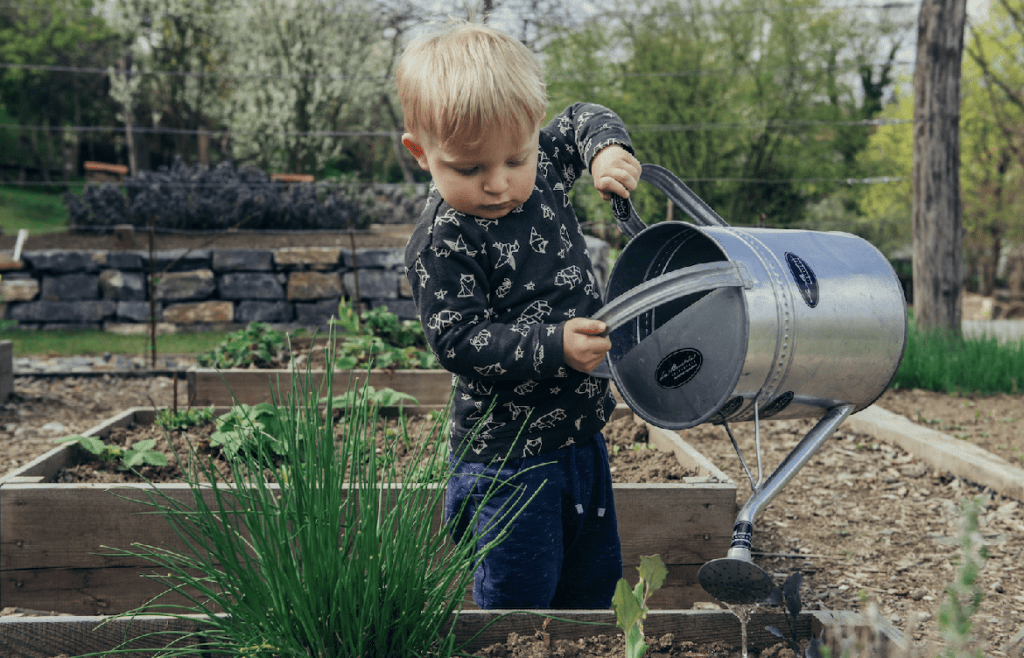
[Check out our blog featuring Christina Abuelo, the volunteer founder and full-time manager of Barrio Botany, a garden-based education initiative that builds classroom gardens and works with kids in urban schools in San Diego.]
For at-risk kids (those living in poverty, in foster care, or other challenging life experiences) getting into the garden can be life-changing. Numerous studies show resilience building-opportunities like classroom gardening can actually reverse future negative impact on adult health and increase rates of early mortality.
Social connection and a sense of belonging
Gardening and being in nature can also reduce feelings of isolation, which we can all agree is a majorly important aspect of emotional wellness.
University of Florida researchers who have studied the impact of gardening on mood and anxiety believe that one of the reasons working in the garden feels so good is related to how plants and humans have evolved together, and humans’ role of cultivating plants and caring for nature.

While gardening can be a calming, solitary activity (and provide cherished alone time for people who need a quiet moment in nature), we can also get much-needed social connection through gardening. Community gardening, events, classes, seed swaps, and family gardening time all offer social and community connections that help us feel a sense of belonging and joy.
So get out there and garden!
There’s plenty more to read when it comes to how gardening, being outside, growing your own food, and tending to nature improves our wellbeing and health…but we think it’s about time to dig into some soil.
While you’re out there, take a moment to reflect on all the good you’re doing for the planet, your family, and your body — because doing mindful, intentional reflection (even for a minute or two) is proven to reduce stress and make you healthier, too.
Wishing you a happy Mental Health Awareness Month. 💚
Show us your True Organic Plants
#GrowWithTrue
www.trueorganic.earth
How to Grow Strawberries in Your Home Garden
April 14, 2023
Chancy Lanier
How to Grow Strawberries in Your Home Garden
Who doesn’t want a basket full of juicy, sweet red berries to share? Strawberries are one of the most rewarding and delightful crops to grow in your home garden. The many varieties of strawberry plants make it possible to grow in almost every Plant Hardiness Zone and harvest strawberries from June to first frost.
If you’ve tried growing strawberries and haven’t had much success, you may just need a few pointers to help cultivate strawberries. They’re not complicated crops to care for, but can require a bit of specific care for the best results.
If you time it right and take good care of your plants, you’ll be feasting on strawberries from early summer to late fall — and maybe even freezing an abundant harvest to enjoy all year.
The Basics of Growing Strawberries
Let’s get you started with a few basic tips and guideposts for growing strawberries in your home garden.
- The scrumptious red treats that you harvest from strawberry plants are, in fact, not berries at all! The fruits produced by strawberry plants are called “aggregate” fruits — a group of tiny fruits embedded in one, juicy flesh receptacle!
- Strawberries can be grown in almost every Zone — but there are many varieties and you want to make sure you choose the right kind for your Zone.
- Whatever Zone and variety, strawberries need full sun (at least 6 hours a day) to produce lots of yummy, ripe fruit.
- Strawberry plants each need at least 12 inches of space (ideally up to 18 inches), so choose an area or containers that allow for decent spacing.
- Yes, you can grow strawberries in containers! Just be sure they have enough space to spread out. Strawberries have comparatively shallow root systems, so they need more space horizontally than vertically.
- Strawberries need bees for pollination. Therefore, it’s a great idea to have strawberries alongside a pollinator garden.
- Strawberries do take some specific maintenance, including trimming runners (or else, like many berries, strawberries can have a tendency to take over your yard or garden bed).
Types of Strawberry Plants
There are three general types of strawberries to choose from, and you can mix and match them, depending on your Zone.
- June-bearing strawberries: These are the most commonly grown strawberries in the U.S. They produce a big crop in mid-June to early July. Though they only fruit once per season, these tend to give the highest yields.
- Ever-bearing strawberries: This type will give you two crops, one in early summer and another in early fall.
- Day-neutral strawberries: These cold-tolerant strawberry types produce fruit throughout the growing season and do better in shady spots, but the berries are less flavorful.
When to Plant Strawberries
Strawberries can be grown as perennials in most Zones, with attentive care. These plants go dormant in winter — you’ll see them drop their leaves and stop growing, but they aren’t dead!
In Zones 4 and 5, be sure to mulch or otherwise cover strawberries properly through those cold winters.
Bareroot strawberry plants can be put in the ground or outdoor containers anytime after the last frost in spring. As soon as the soil is soft enough to pierce with a trowel, you can plant strawberries!
They can also be planted in winter, then covered in preparation for spring. Since strawberries go dormant in winter and are perennial plants, they’re naturally inclined to over-winter.
After four or five seasons, strawberry plants may stop producing lots of fruit — while the plant can still keep growing, you may want to compost those “old” plants and start with new ones if you want big harvests.
How to Plant Strawberries
Strawberry plants have a stemmy crown that needs to be above the soil, so many people accidentally plant them too deep.
- Plant the roots, not the crown.
- But make sure roots are covered! If the roots are exposed, the plant will lose water and be at risk of damage.
- Choose a sunny spot. Strawberries need 6 hours of sunlight at minimum — ideally, they will be getting 8 hours of good sunlight every day.
- Because of their shallow roots, it’s exceptionally important to make sure strawberries are planted in well-draining soil.
- Space plants 12–18 inches apart to provide room for runners.
- Plant rows at least 3 feet apart.
- If you’re not planting in rows, just make sure strawberries are spaced apart from other plants that may compete for water.
- Give your strawberries a boost with organic granular fertilizer upon planting and repotting, like our True Organic Berry Food or All-purpose Plant Food.
- Replant/repot established strawberries in the fall with a measured dose of organic plant food.
Caring for Strawberry Plants
After your strawberries are established, follow these basic guidelines to keep healthy plants and cultivate satisfying harvests:
- Encourage roots and shoot growth by pruning the first flowers on your strawberries. (For June-bearing strawberries, you can remove the blossoms for the entire first year of the plant’s life — that will help it establish strong roots and stems for years to come.)
- Weed your strawberries regularly, as these plants are not the best at competing with weeds. Consider mulching your strawberry patch for more weed protection.
- Pay attention to runners. The vine-like shoots that strawberry plants grow are runners that produce new plants, and like the new stems and leaves on your houseplants, they can be propagated! But they can also take over the garden if unattended, so eliminate the excess runners and trim the strong ones by placing them into new soil (in-ground or in a container).
- Water your strawberries daily with about 1 or 1.5 inches of water. In very hot summer months, they may need to be watered twice a day.
- If you are cultivating your strawberries as perennials, take the time to place straw or fabric covers plants in winter to protect them. Once spring comes, remove covering as the plants start to grow again and give them a new dose of plant food.
Happy growing!
Show us your True Organic Plants
#GrowWithTrue
www.trueorganic.earth
Container Gardening 101: Starting A Potted Garden in Any Space
March 30, 2023
Chancy Lanier
Container Gardening 101: Starting A Potted Garden in Any Space
So you want to grow a luscious garden but you don’t have quite enough outdoor space…or any outdoor space at all? 😮
Don’t fret! Growing a garden in containers is a wonderful, fun, effective way to grow plants of all kinds. Container gardening is a great way for beginner gardeners to start learning how to grow plants on a small scale with minimal commitment.
Spring is a fantastic time to start a container garden indoors or outdoors — so prep your back patio, shared apartment complex outdoor space, even your front steps or windowsill.
Choose your container
There are a huge variety of containers you can use to grow plants, all with different characteristics and aesthetics. It can be intimidating to choose your growing containers, so start by looking at these variables:
- What plants you’re growing
- Your desired aesthetics
- How much space you have
- How much time and effort you want to devote to creating containers
- Your budget
- Your climate
 Container Size
Container Size
It’s a good idea to maximize the size and depth of your container to allow roots more space to
grow. A 5-gallon container is perfect for tomatoes, peppers, big flowers (like dahlias and bougainvillea) and other fruiting veggies, while something smaller will be a happy home for smaller plants that don’t have large root systems.
Use more shallow pots or boxes for plants that don’t need a ton of root space like herbs, grasses, lettuce, and other greens.
If you’re growing on a balcony, be careful with heavy, big containers — you don’t want to damage the foundation of your balcony! Small containers can be more versatile and quick-drying, so are great for small balconies and window boxes.
Container Material
Container materials also have their own characteristics: weight, drainage, sensitivity to weather, and cost. Larger containers tend to need less frequent watering, but are heavy and hard to move. Small containers are convenient for rearranging, but will dry out more quickly and need more frequent watering.
There are so many materials to choose from when it comes to small-space container gardening! Here are the most common options and some things to keep in mind when container gardening in each:
- Fabric: Super-lightweight, drainable, and breathable, fabric “pots” are a good choice for small plants, hanging gardens, and container garden situations that may need frequent rearranging.They’re easy to wash and reuse season after season. They are expectedly a bit flimsy, so don’t use fabric for very tall, stemmy plants or anything with heavy fruits.
- Plastic: Inexpensive and light-weight, plastic is a go-to for many container gardeners. It’s also super easy to add drainage holes to plastic containers. But if you want something more aesthetically pleasing, plastic might not be for you.
- Terracotta: Heavier than plastic but almost as inexpensive, terracotta/clay is the next step up when it comes to aesthetics. Terracotta is fragile and absorbent, so be careful with this material if you live in a very windy area or a place that gets freeze-thaw cycles, as terracotta may crack in Zones with widely changing temperature and humidity.
- Wood: Be sure to use a durable, non-treated wood when planting in wood containers. Cedar or pine work well.
- Concrete: Concrete is ideal for container gardens that are semi-permanent, as it is extremely heavy! Concrete’s durability and heaviness makes it wonderful for any type of weather, places with high winds, and long-lasting perennials, flowering plants and vines that you want to last for years to come. Perfect for front porch and stoop adornment.
- Plant-based, biodegradable “plastic”: The newest innovation in container gardening and houseplant growing is plant-based pots that can even be biodegradable! They can be more expensive than other materials. They often come in a lovely rainbow of colors and you can find them at most garden stores and even some homegoods stores nowadays.
Choose your location
Just as with a standard garden bed, consider sunlight exposure, water accessibility, and protection from weather and pests when deciding where to put your containers.
While you may have limited choice when it comes to where your containers are placed, you should maximize sunlight. But one of the great things about container gardening is mobility and variability.
If you don’t have a lot of light in your container garden area, pick plants that need less sunlight like lettuce, arugula, and other salad greens; chives and other herbs (except basil, which needs full sun), brassicas like broccoli and kale; ferns, fuschia, and other decorative flowers and foliage that don’t need full sun (just 4 hours per day can suit these plants).
If you do have a place for containers in full sun (at least 6 hours per day of direct sunlight), you’ll be able to grow basil, tomatoes, peppers, peas, and even okra and eggplant in pots!
Ensure good watering and drainage
Place your containers somewhere easy to water, either with a hose or with your watering can. Container-housed plants tend to need more frequent watering than in-ground plants because their limited soil can’t store as much moisture over time.
Remember that you need drainage holes for each and every type of plant! Don’t forego this important step. If you are using a material like wood, metal, plastic, or fabric, creating drainage holes that suit your crops’ needs is easy with a power drill or even kitchen scissors (with fabric). For clay, concrete, or more sturdy containers, be sure there are pre-existing drainage holes before you make a purchase.
Overwatering container plants (including houseplants) is a common fatal flaw. Check out our exclusive interview with rare plant grower and spa owner Elana Gainer to get some expert tips on how to care for container plants, especially indoor green friends.
Planting Into Containers
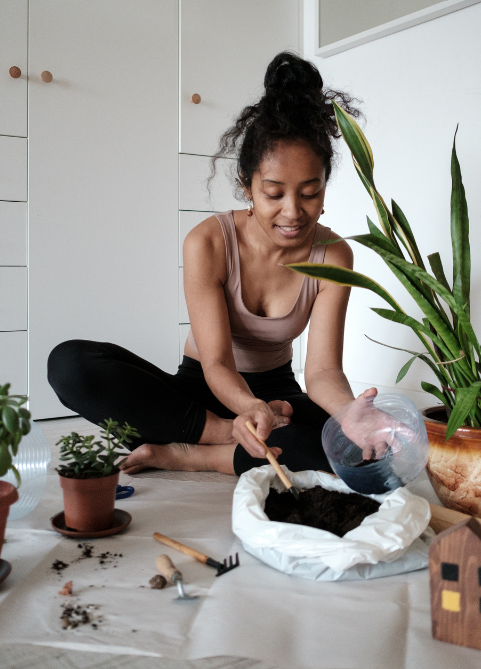
When you’re ready to plant your container garden, be sure to:
- Use new potting mix (not soil from the ground, which will be too heavy for a container).
- Mix in an organic granular fertilizer like our Organic All Purpose Plant Food or something more specific to your chosen crops.
- Fill the container about halfway or two thirds full with potting mix, depending on the depth of your plant’s existing roots and stems — then gently place your plant in the container.
- Fill in the space around your newly potted plant and eliminate air pockets by pressing gently around the whole container with your hands
- And water in — you may need to “top off” soil in a few days after the potting mix settles.
Fertilize Your Container Plants
Now for the best part, in our opinion: feeding your container garden with food-safe organic fertilizers!
When you first fill your containers, whether at the beginning of each season or upon planting or repotting, mix in a granular fertilizer. Our True Organic Raised Bed Food is an ideal boost for starting container gardens, formulated specifically to give above-ground plants the nutrition they need.
For abundant fruiting and flowering, try our ethically sourced Organic Seabird Guano — or explore our whole line of granular organic plant foods to see how True Organic can help you grow a beautiful, bountiful container garden.
During the active growing and fruiting seasons, applying a liquid is an easy, container-friendly choice. That’s why we designed our organic liquid plant foods for you! Adding some organic liquid plant food during your plants growing or fruiting seasons is quick and safe.
Our liquid organic plant foods (like Liquid All Purpose Plant Food or Tomato & Vegetable Food — both perfect for successful container gardening) are designed to be applied biweekly throughout active seasons for healthy, more fruitful gardens of all sizes.
Before you know it, you’ll be picking juicy tomatoes, admiring bright flowers, and harvesting fragrant herbs right from your patio or front steps. You’ll be surprised just how many varieties of flowers, veggies, herbs, and decorative plants can thrive in containers.
Show us your True Organic Plants
#GrowWithTrue
www.trueorganic.earth
6 Tips for a Perfect Pollinator Garden
March 8, 2023
Chancy Lanier
Pollinators are ecosystem heroes. 🦋
Bees, butterflies, moths, bats, birds, and even wasps have ensured that plants can reproduce long before humans started cultivating plants. Without them, the world as we know it would be impossible — all the food we grow, plant resources we use, and plant-expelled oxygen we breathe is dependent on pollinators.
Creating a pollinator paradise is simple, but there are a few important things to know before you get started. All the resources you need are at your fingertips online or at your local garden store…and we’ll start you off with some basic knowledge!
Here are six tips for growing a stunning pollinator garden this year, including a few easy-to-grow pollinator-friendly plants to try.
1. Choose native plants
Selecting plants that are native to your region will increase the benefits of your garden to pollinators and to the entire ecosystem.
“Native plants share a long evolutionary history with their pollinators,” writes Constance Schmotzer of Penn State University’s Agricultural Extension.
Not only are native plants easier to maintain (because they evolved to thrive in your climate!), but they are also experts at attracting your local pollinators. Plus, they tend to be more hardy and can flourish without harsh fertilizers and pesticides, thanks to the adaptations they’ve gained through millennia of growing in your climate, soil type, and in relationship with other local native plants and wildlife.
Do your research (online and at a local nursery) to find out what kinds of native pollinator-friendly flowers (and the grasses and other types of plants that support a healthy ecosystem) are good to grow in your soil and Plant Hardiness Zone. Contacting your local Master Gardeners or the closest agricultural university extension is also a great way to get more detailed info on native plants for your garden.
 2. Prioritize biodiversity
2. Prioritize biodiversity
You want to focus on biodiversity in any garden you’re growing, that’s for sure. It’s especially important when cultivating a pollinator garden.
Biodiversity (cultivating a wide variety of crops) is key for a pollinator paradise — and key for the health of our whole planet.
Some pollinators can get nectar and pollen from a wide variety of flowers, but others have specialized needs and some have special needs when it comes to gathering their food. A successful pollinator garden has something for everyone.
Create a garden full of unique varieties so pollinators have lots of different options. Choose plants with pollen-rich blooms in a variety of shapes, sizes, and colors.
Make sure there is food for the caterpillars too! Baby pollinators (larvae) need to eat the leaves of native trees, shrubs, and perennials, and many caterpillars can only eat one or two specific kinds of “host” plant. This host plant is also where the butterflies or moths will lay their eggs to hatch into new pollinators!
So check out what kind of host plants your local pollinator larvae need to eat and make sure those are in your garden, too.
3. Go organic
Harsh chemical fertilizers and pesticides cause more harm than good for pollinators. But we probably didn’t need to tell you that. 😉
Our brand new Annuals & Perennials Food will be perfect for your pollinator garden.
Limit hybrids and heavily genetically altered plants, too. These may have lost their ability to produce nectar and pollen (especially if they have been hybridized for special blooms or extra color).
4. Stagger your blooms
The longer you have blooming flowers, the longer pollinators can enjoy their harvest in your garden! Pollinators will be emerging, building their colonies, and laying eggs at different times of year and need food throughout.
Look for plants with a diverse timeline of blooming periods. Try for early spring bloomers and some flowers that will last to late fall.
5. Location matters
Plant you pollinator-friendly plants in drifts of color. Clump several plants of the same type together to give pollinators a bright, attractive swath of colorful, fragrant blooms!
6. Try these easy-to-grow pollinator plants
- Yarrow: This lovely yellow wildflower is a signature of pollinator gardens from Zones 3 to 10.
- Milkweed: This Zone 9-10 plant is the sole food of monarch butterfly larvae and feeds many other types of pollinator.
- Sunflower: You can’t go wrong with sunflowers. You can find a variety for just about every zone that blooms late into fall.
- Goldenrod: These gorgeous, brightly colored blooms are vital for monarchs, too, in Zones 4-8.
Show us your True Organic Plants
#GrowWithTrue
www.trueorganic.earth
Get to Know Annuals & Perennials Food
February 27, 2023
Chancy Lanier
Meet the newest addition to the True Organic Plant Food lineup: our Organic Annuals & Perennials Food! We’re excited to answer some common questions about this new granular blend.
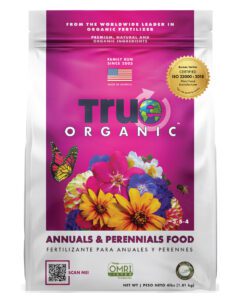
How is the Annuals & Perennials Food different from other True Organic plant foods?
This uniquely crafted blend is higher in phosphorus and potassium (relative to nitrogen). Phosphorus and potassium encourage flower growth (reproductive growth) over vegetative growth. A more generalized food like our All-Purpose Plant Food has more nitrogen to encourage more vegetative growth. But when you plant flowers, you want blooms! Specifically, you want to see more blooms than stems or greenery. Raising a sturdy plant is important for getting prolific, healthy blooms.
Phosphorus ensures that the energy taken in by the plant is moved into roots for development and growth, as well as for flowering.
The increased potassium is good for establishing strong shoots and roots at the cellular level, so that the plants can pull up lots of nutrients. This is especially important for perennials, since they are long-lasting garden additions that hold up lots of beautiful blooms (hopefully)! Potassium in the form of soluble potash can also contribute to increased size of blooms.
Let’s look at the premium ingredients used in this blend. What are they and how does each contribute to plant and soil health?
Shrimp Shell Meal and Crab Shell Meal: These both contain high proportions of chitin, a nitrogen-rich amino sugar that triggers an immune response in plants — so it helps suppress soil-borne diseases. Shells also contain calcium and magnesium. Calcium increases cell wall strength and helps reduce the likelihood of things like blossom end rot; magnesium is key to a plant’s ability to absorb sunlight because it’s an essential part of chlorophyll.
These two ingredients also tend to break down quicker than bone meal.
Poultry Manure: While many kinds of manure can make a great base for granular fertilizers, poultry manure is widely used in gardening and agriculture because it tends to be higher than other animal manures in the nutrients that plants most need. Of course, it’s also a good source of organic matter. Our poultry manure comes from organically fed birds and passes through the most rigorous food safety-certified protocol possible, so this organic goodness is ready to nourish plants and soil.
Soybean Meal: Typically high in nitrogen and low in phosphorus and potassium, this plant-based fertilizer component is slow-release. That means it can feed the plant over the growing season in small increments. It’s good to note that microorganisms will break this material down easiest during warm, wet weather (or when you consistently water during warm weather).
What home garden plants is Annual & Perennial Food best for?
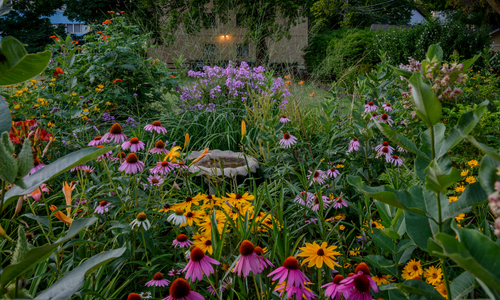
Any plants that should NOT get any Annual & Perennial Food?
Annual & Perennial Food isn’t aimed at heavy nitrogen feeders (like tomatoes, corn, peppers, etc.). You can use Annual & Perennial Food as a timed application to help boost blooms or fruit in things like peppers and tomatoes, but it shouldn’t be your primary source of fertilizer.
Margaret’s top tips:
- Remember to keep the soil moist to help the fertilizer break down for plant uptake by soil microorganisms, but not so wet that roots begin to rot!
- Over-applying will not always get bigger or better results!
- If you grow the same plants in the same place every year, try to change it up so that you can replenish the nutrients removed by those plants.
- You can also amend the soil by adding compost or other organic material in the fall when you remove that season’s plants. This gives you a leg up when you plant the following season.
- Fertilizing perennials is different from what you might be used to with annuals. Take time to research your plants so you always have the best blooms on the block. Flower show winners! I mean, is it really gardening if you don’t brag about your crops?! (Not that we’re competitive over here or anything…)
Happy gardening!
Show us your True Organic Plants
#GrowWithTrue
www.trueorganic.earth

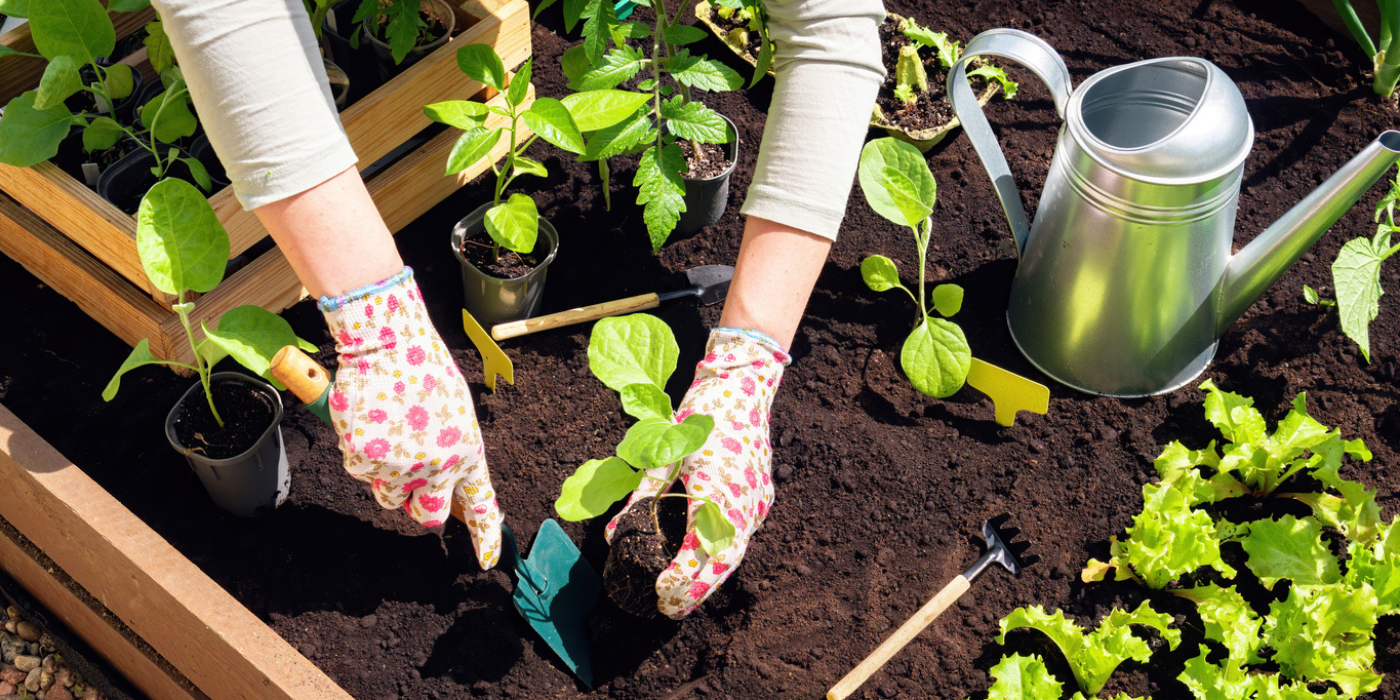
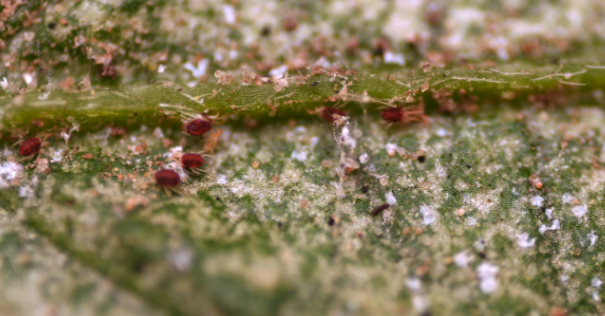
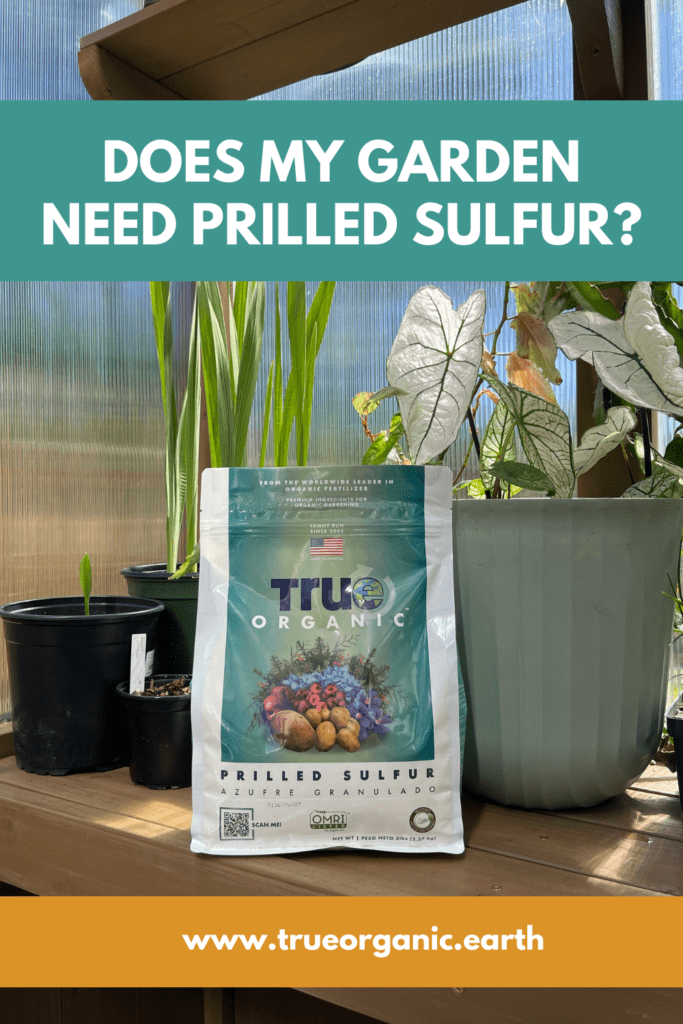

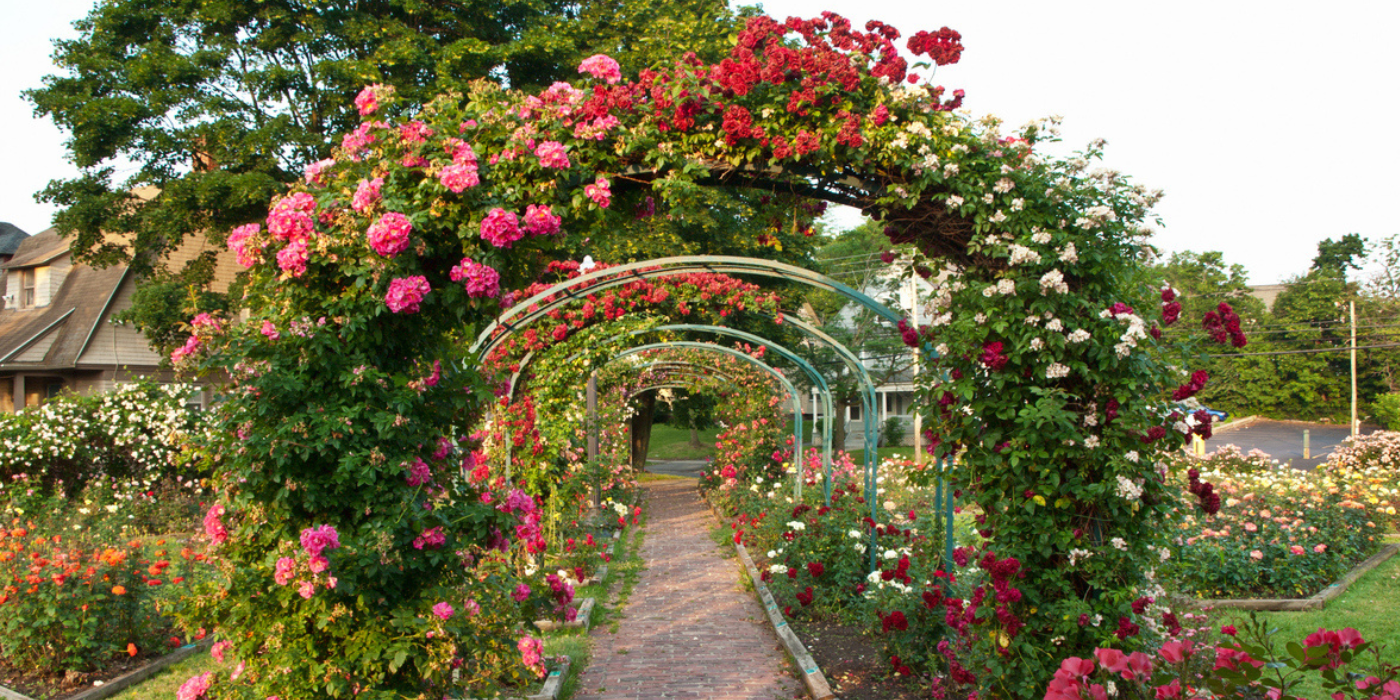
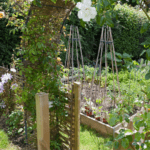
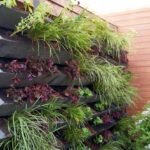
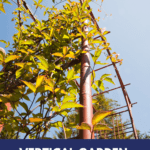
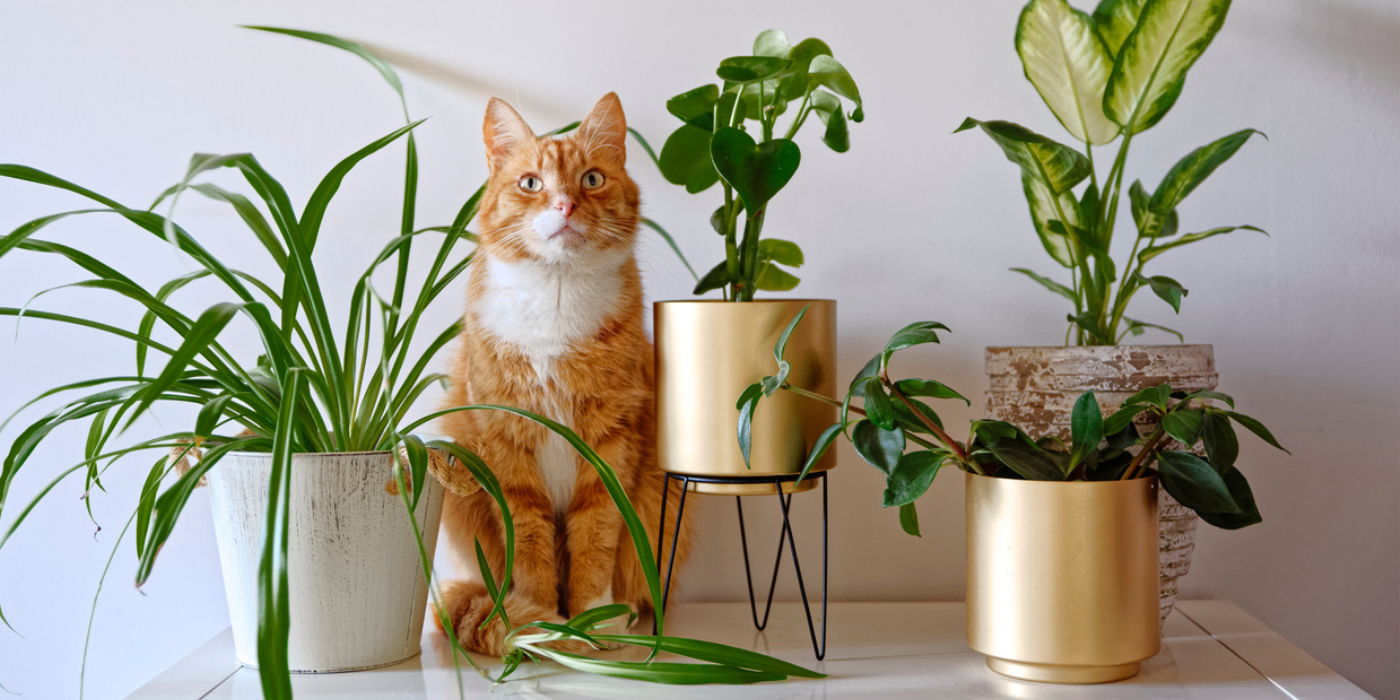
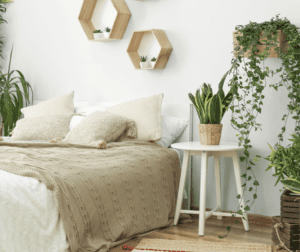

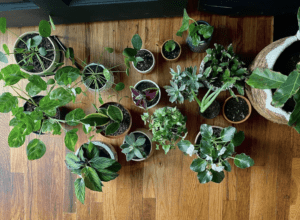
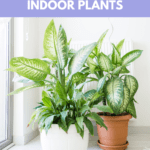
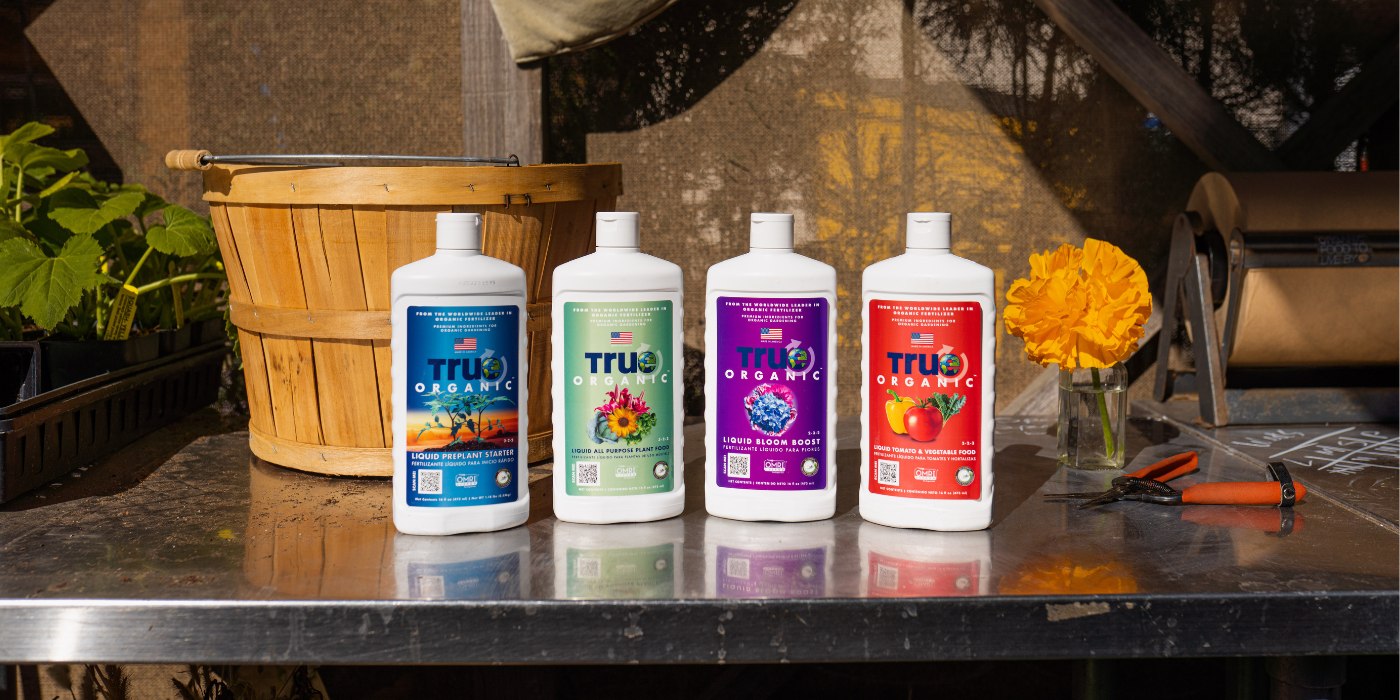
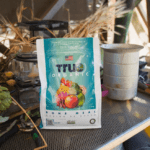



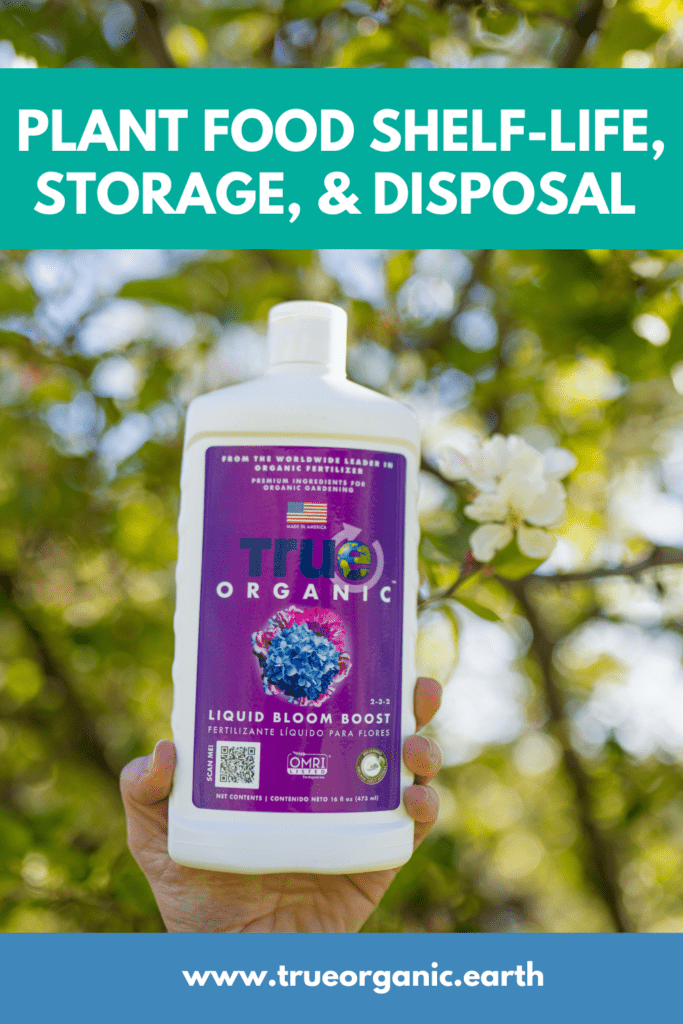
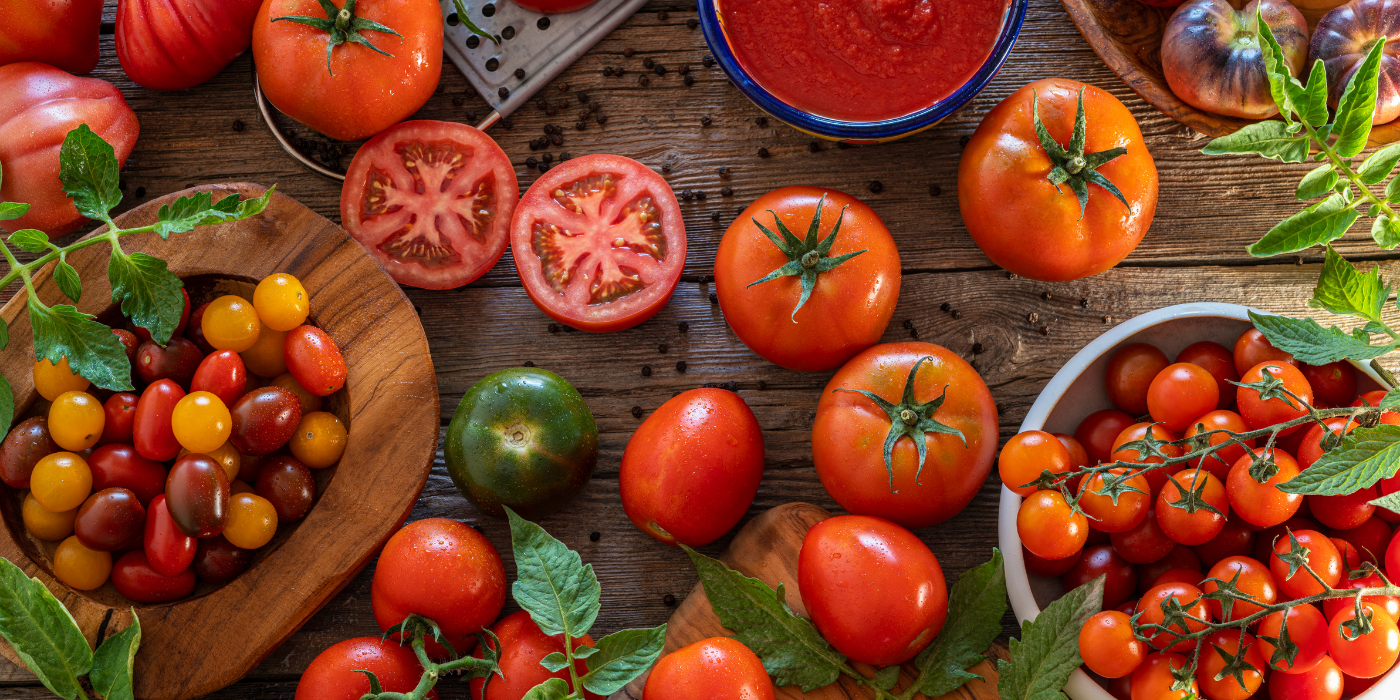
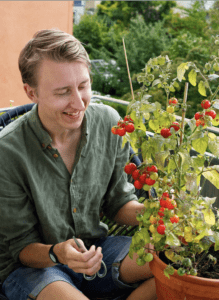 #1: Sun, sun, sun!
#1: Sun, sun, sun! 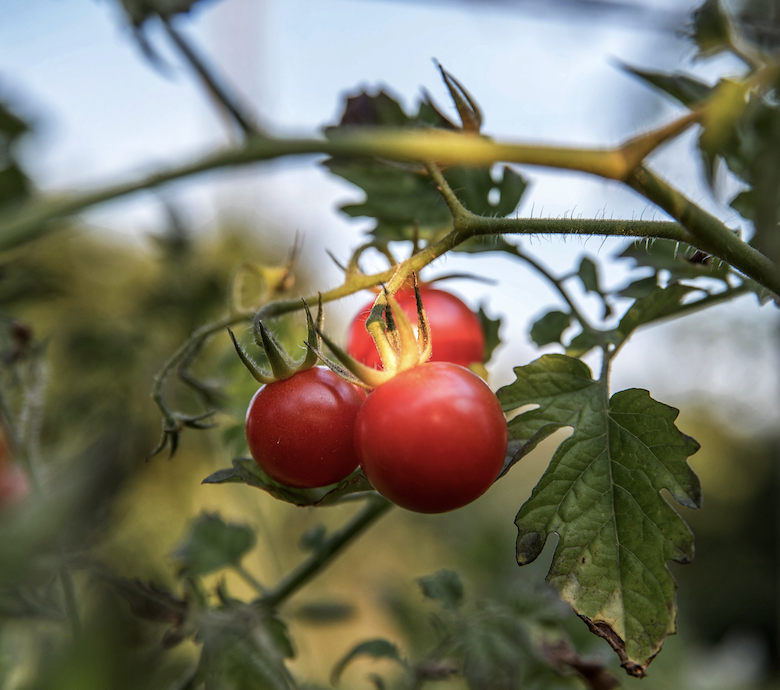
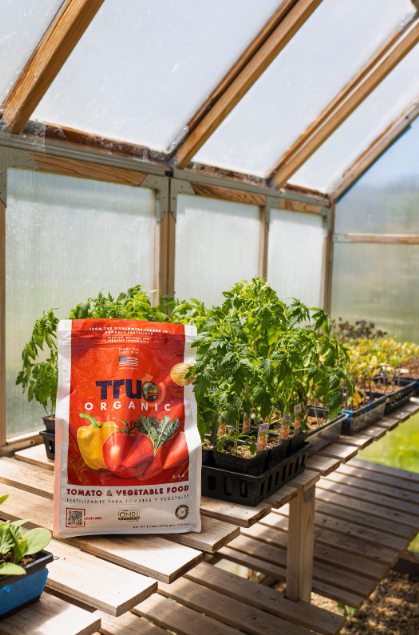
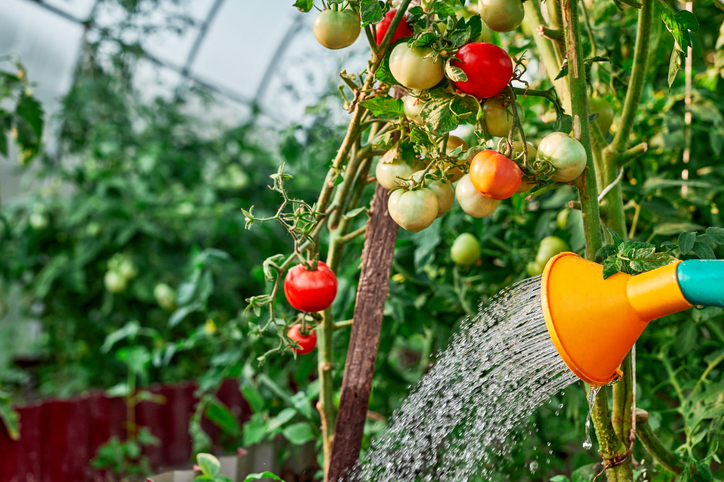
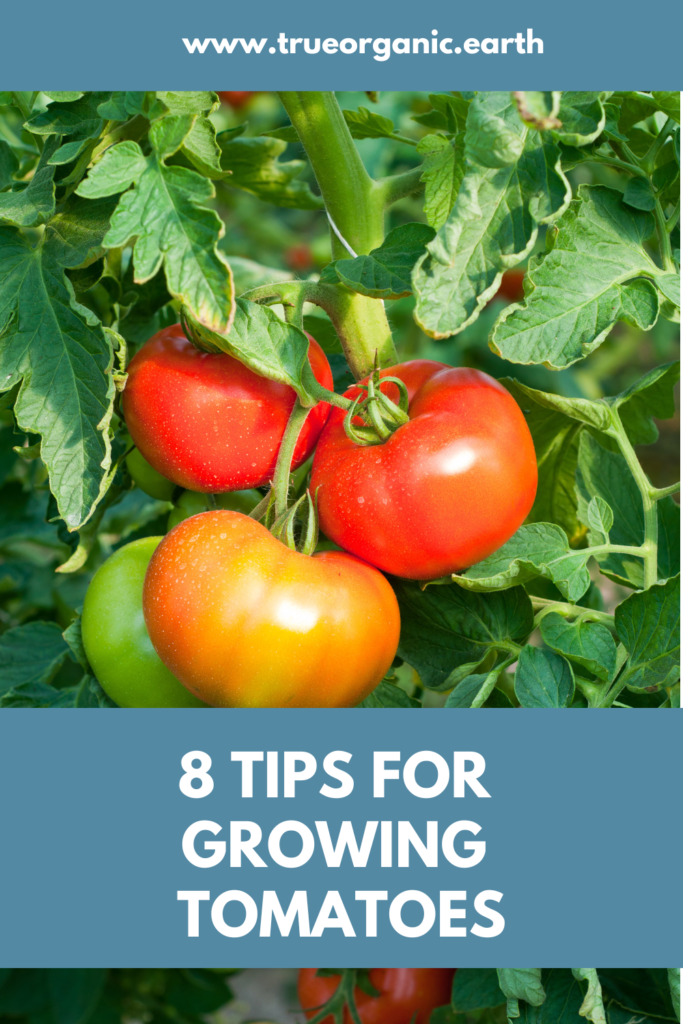
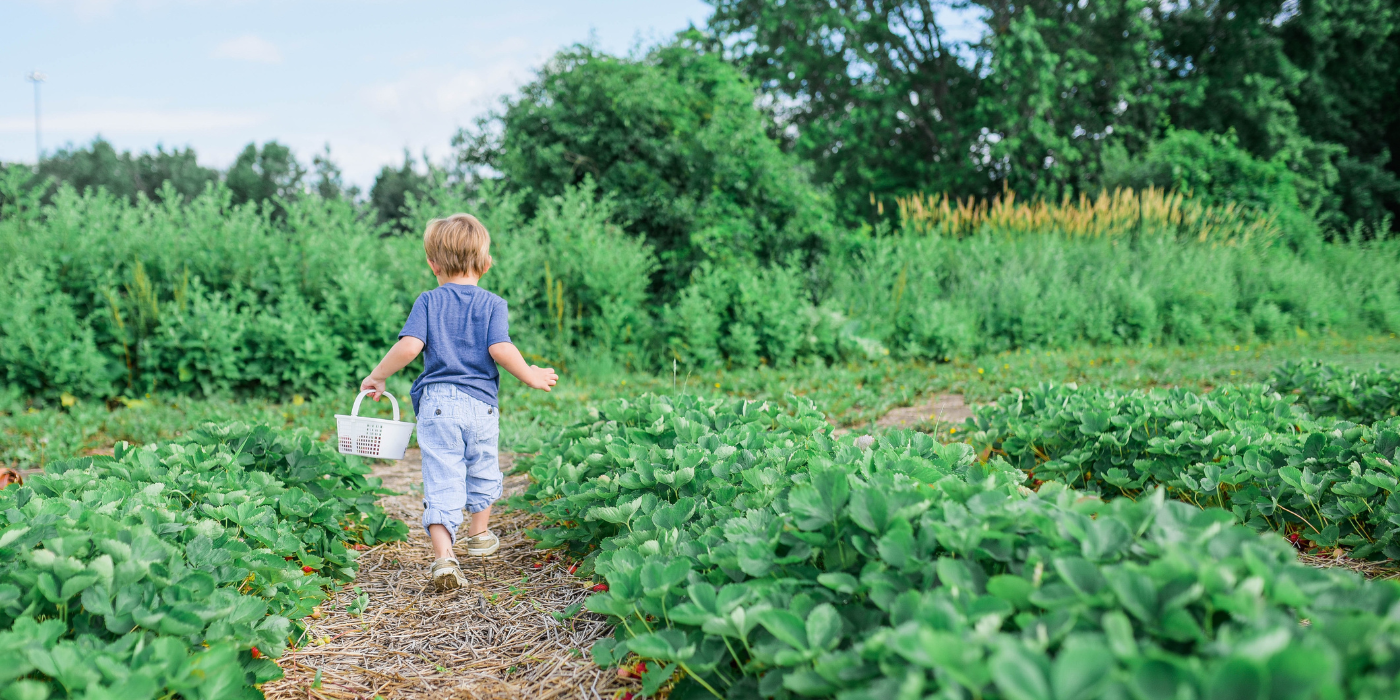
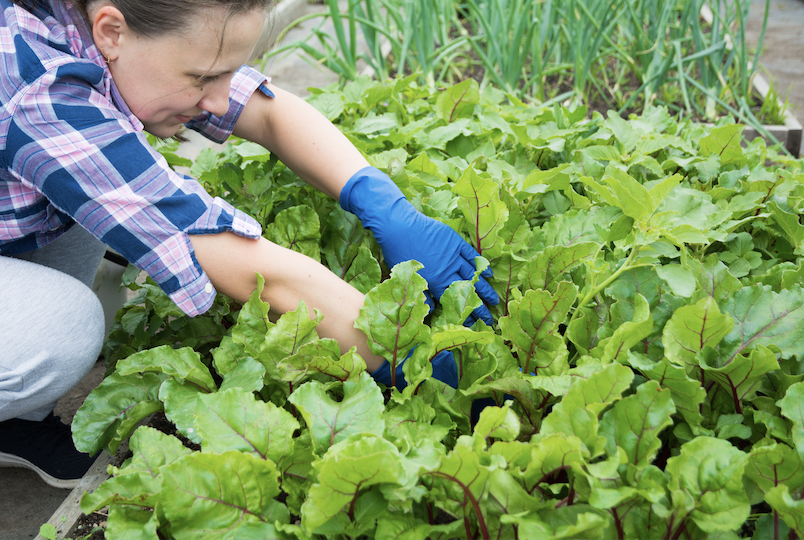
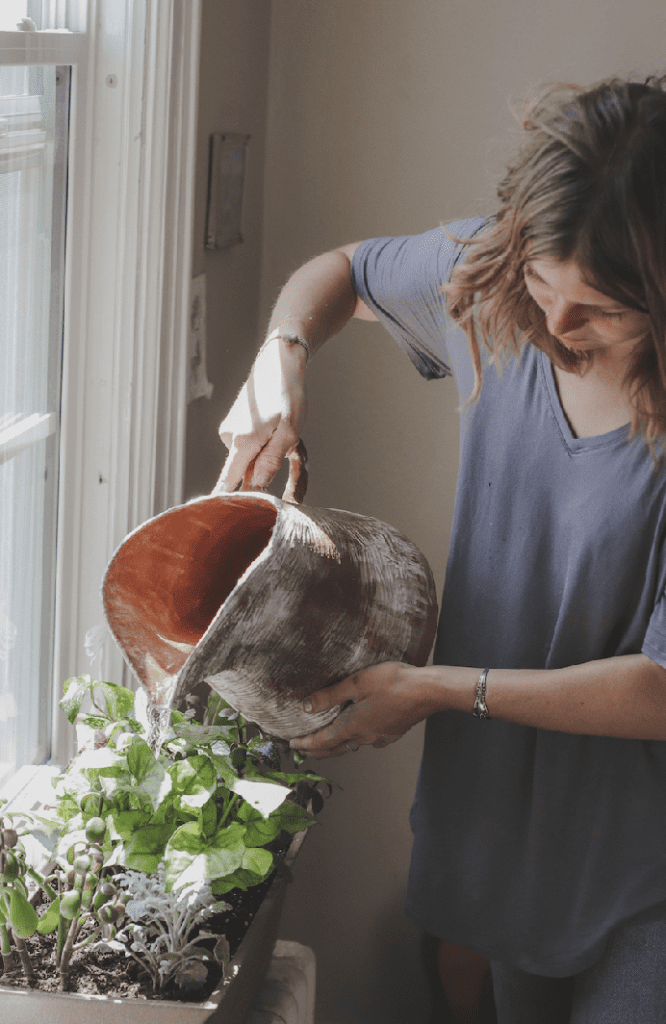 Less anxiety, better mood
Less anxiety, better mood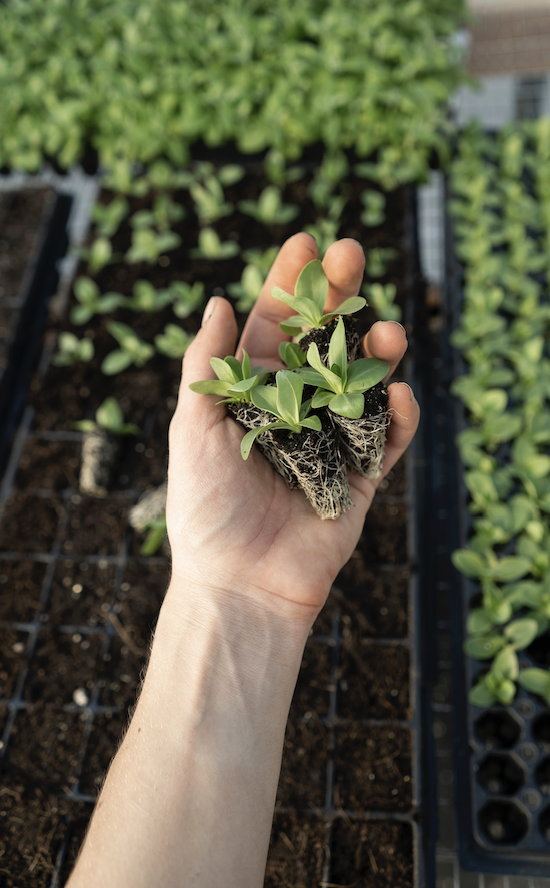 Physical wellness
Physical wellness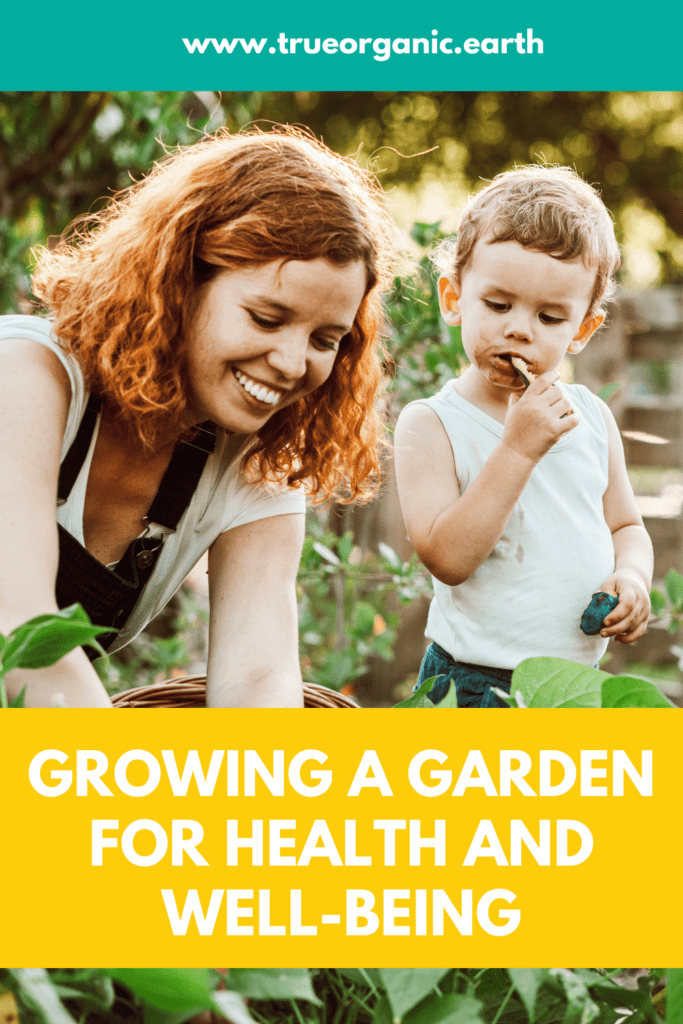
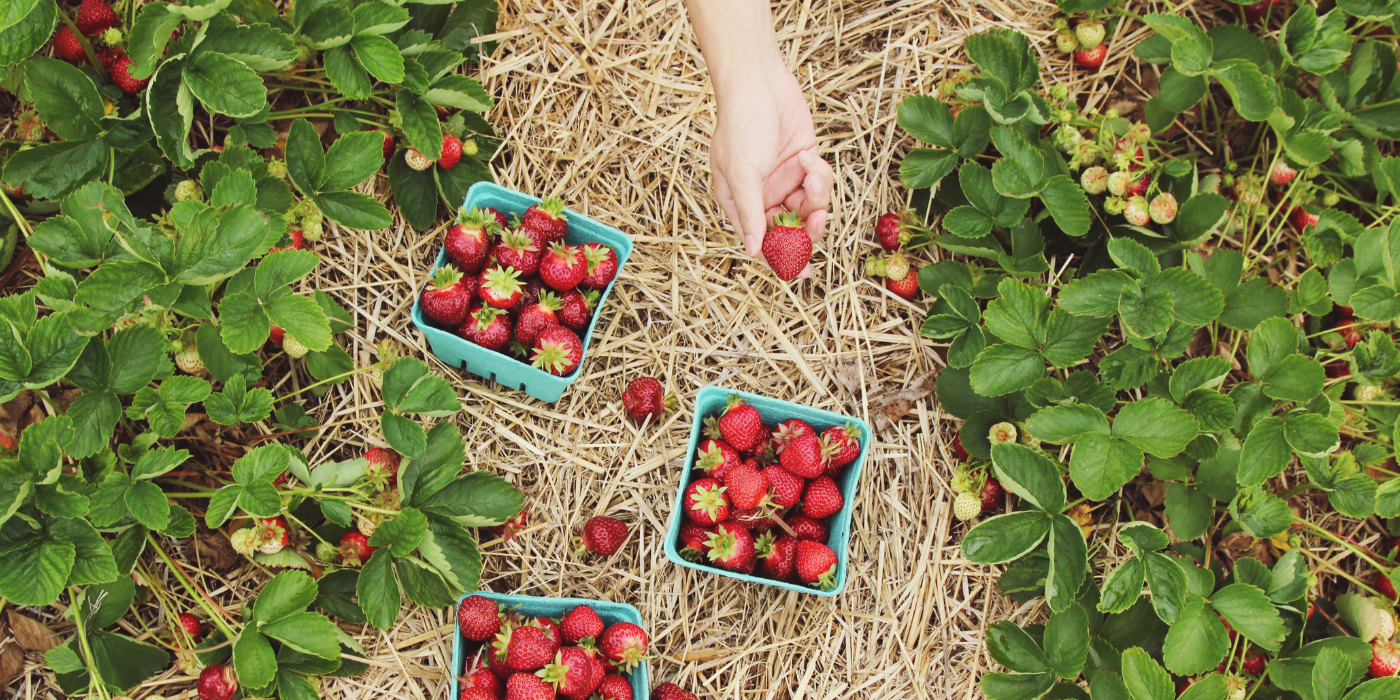
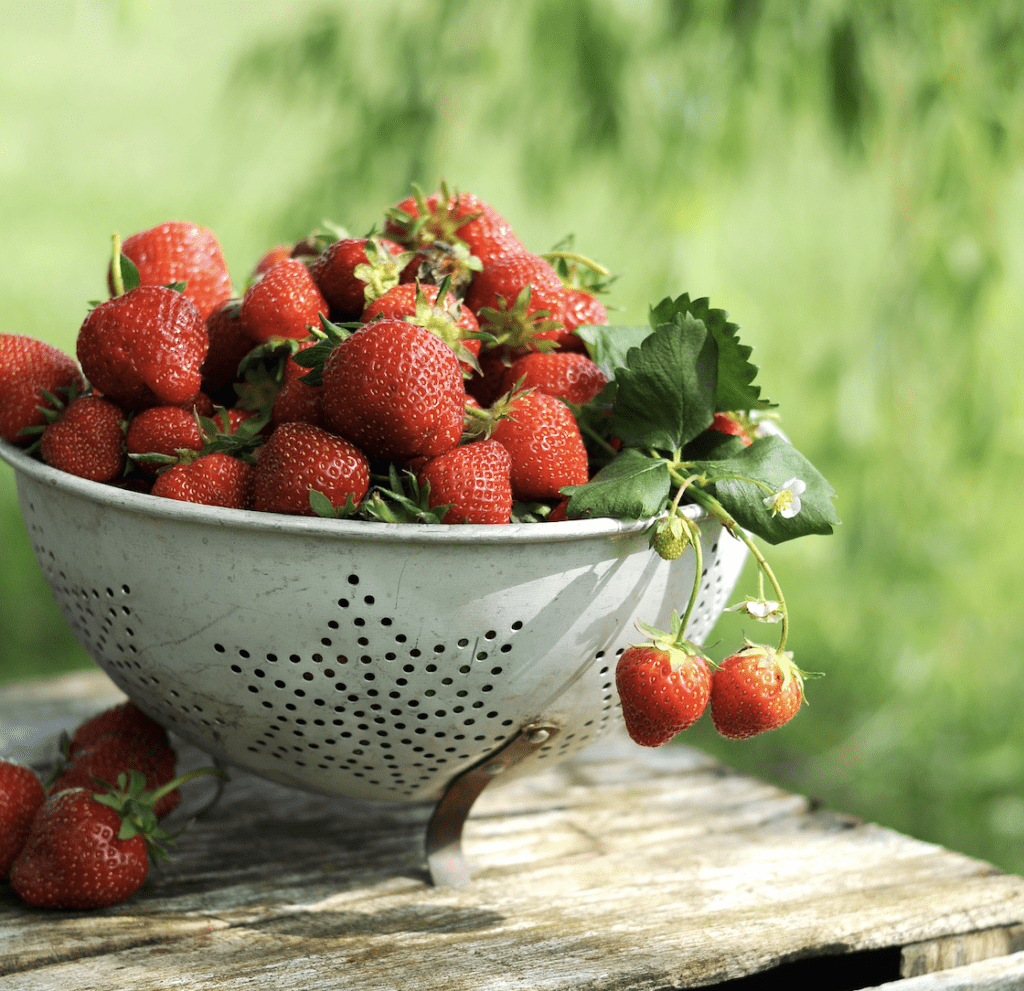
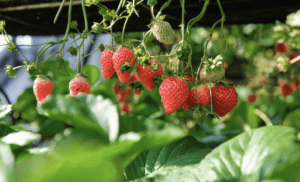
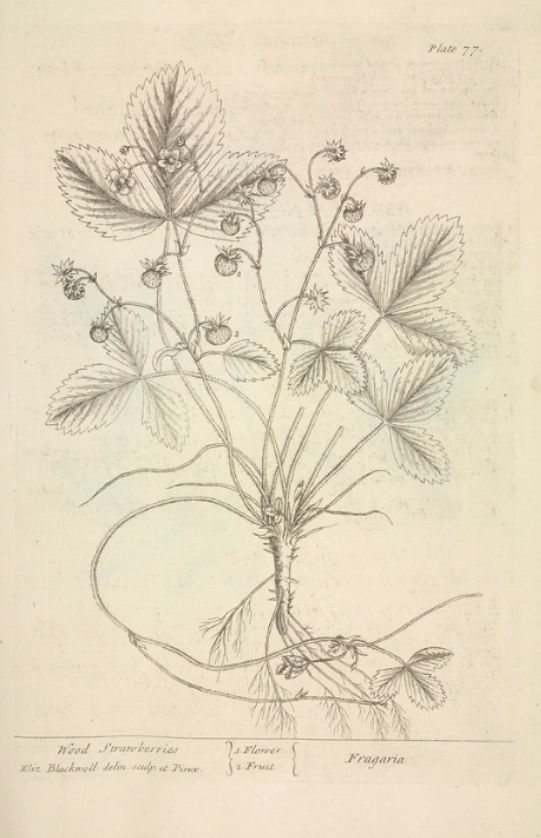
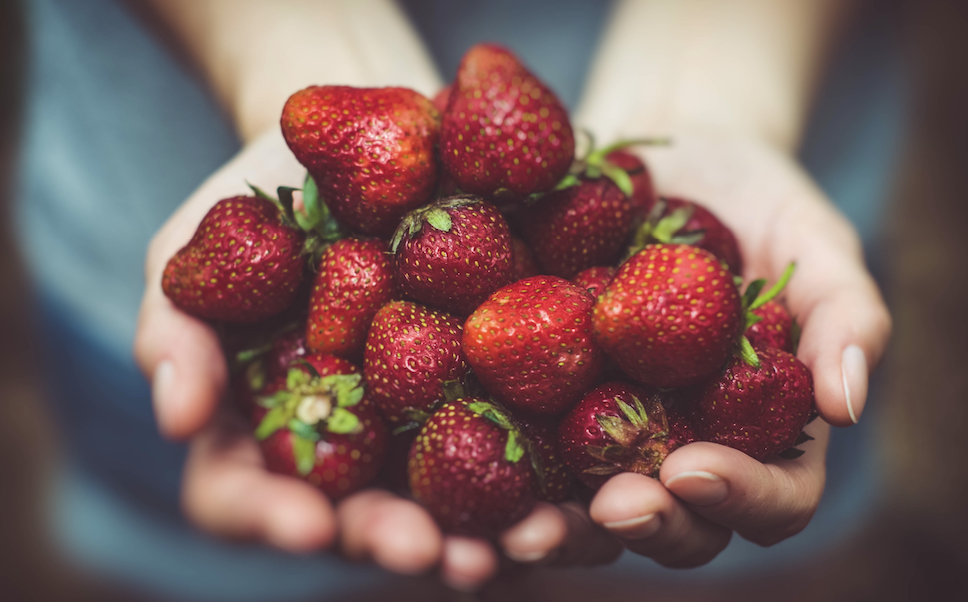
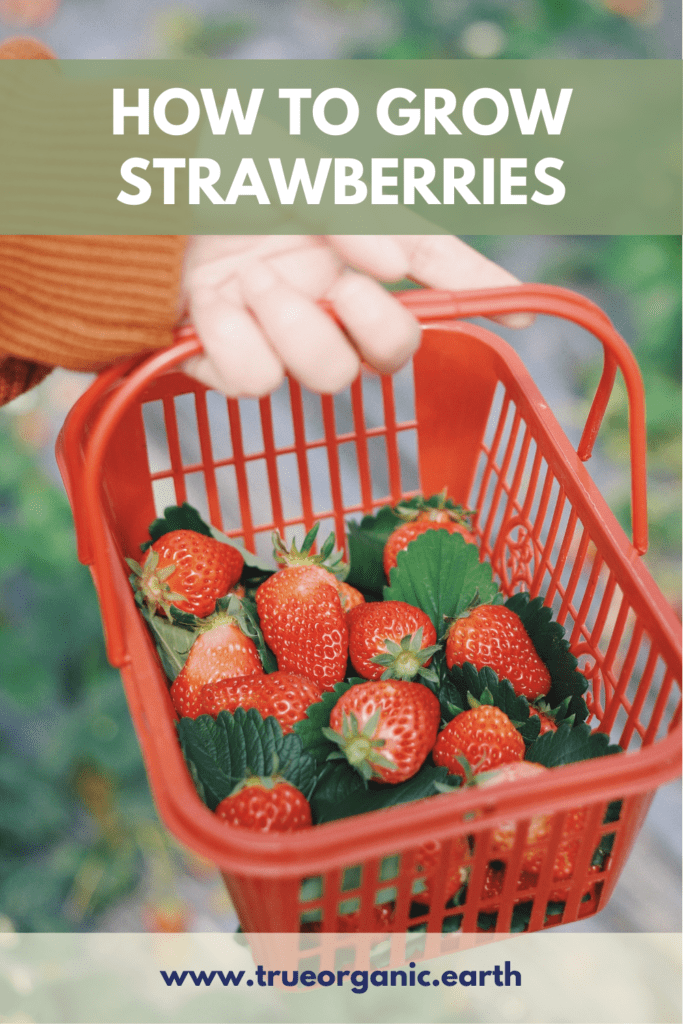
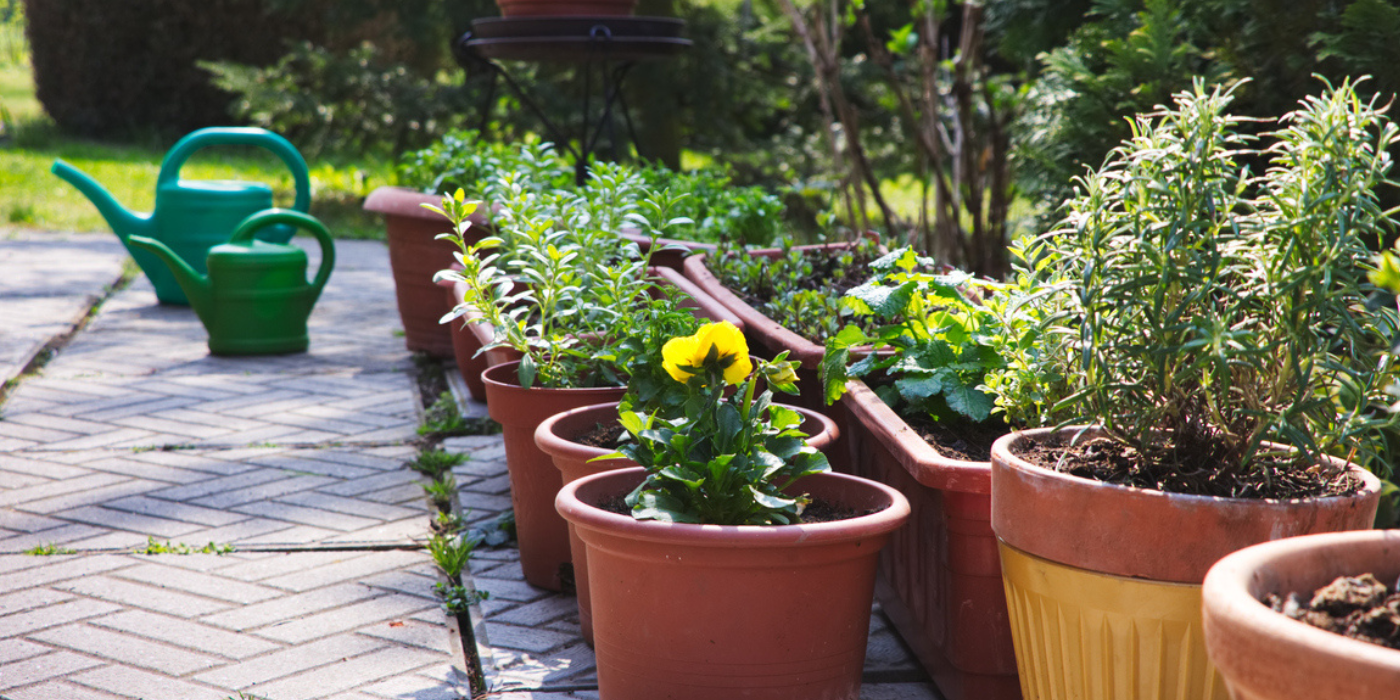
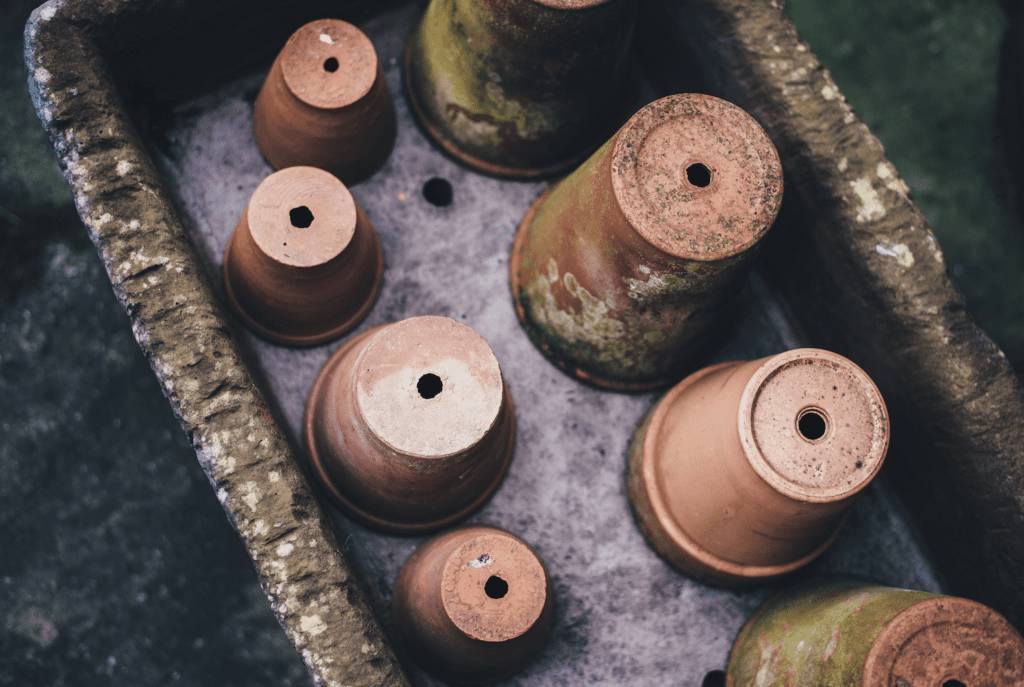 Container Size
Container Size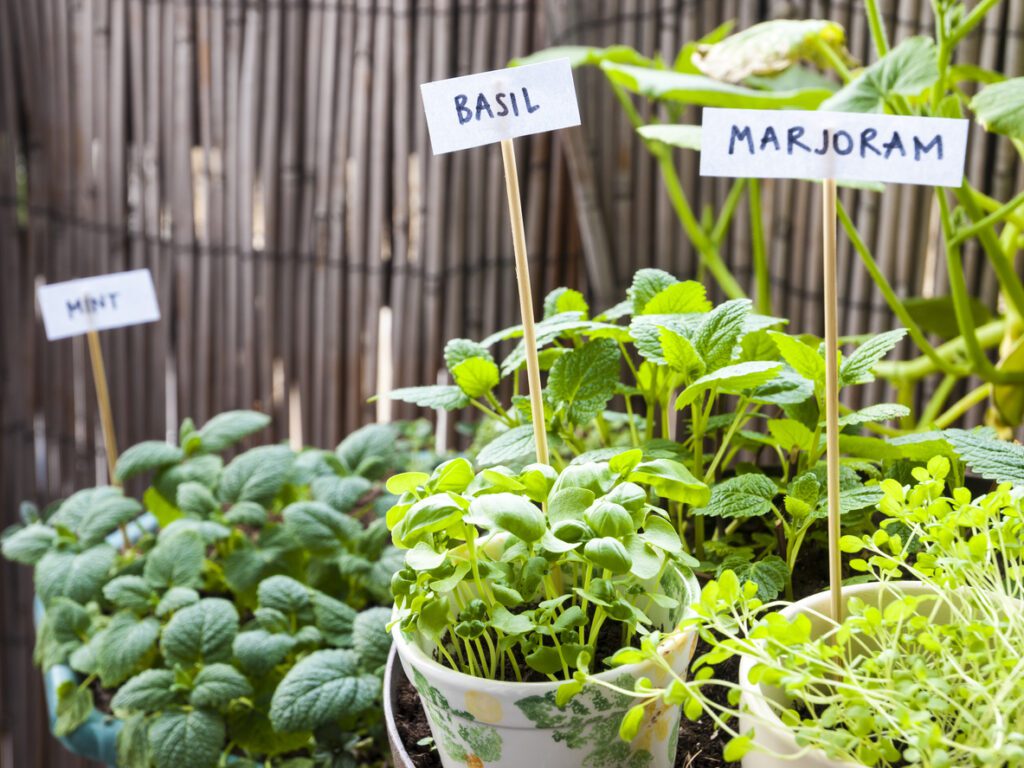
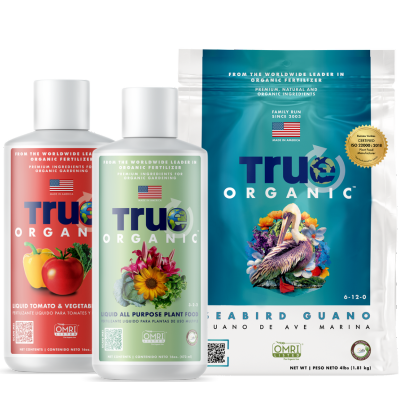
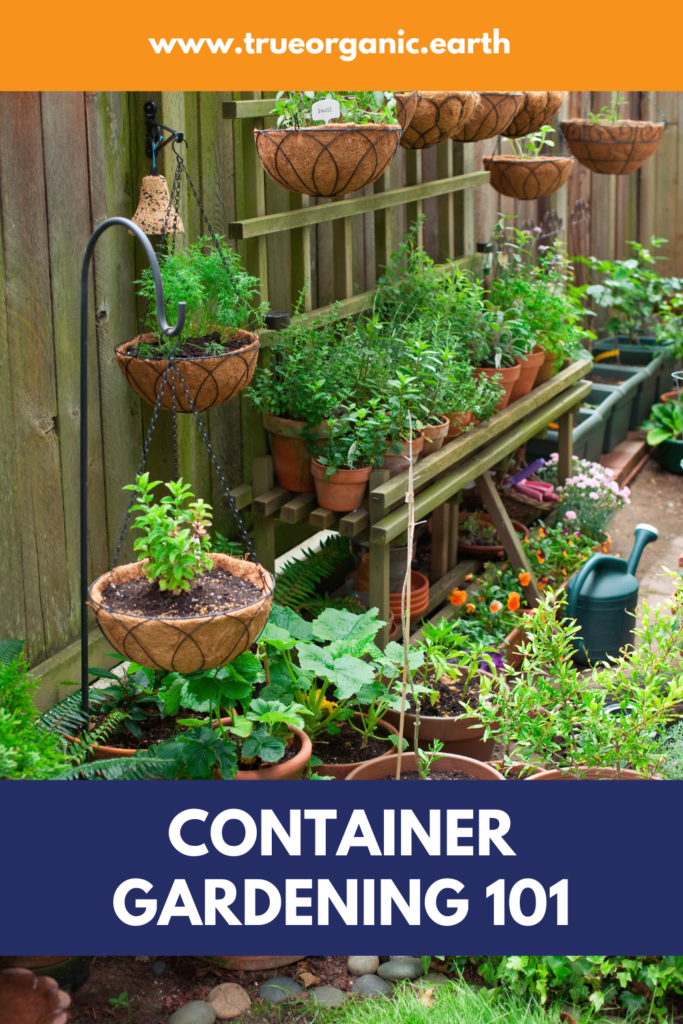
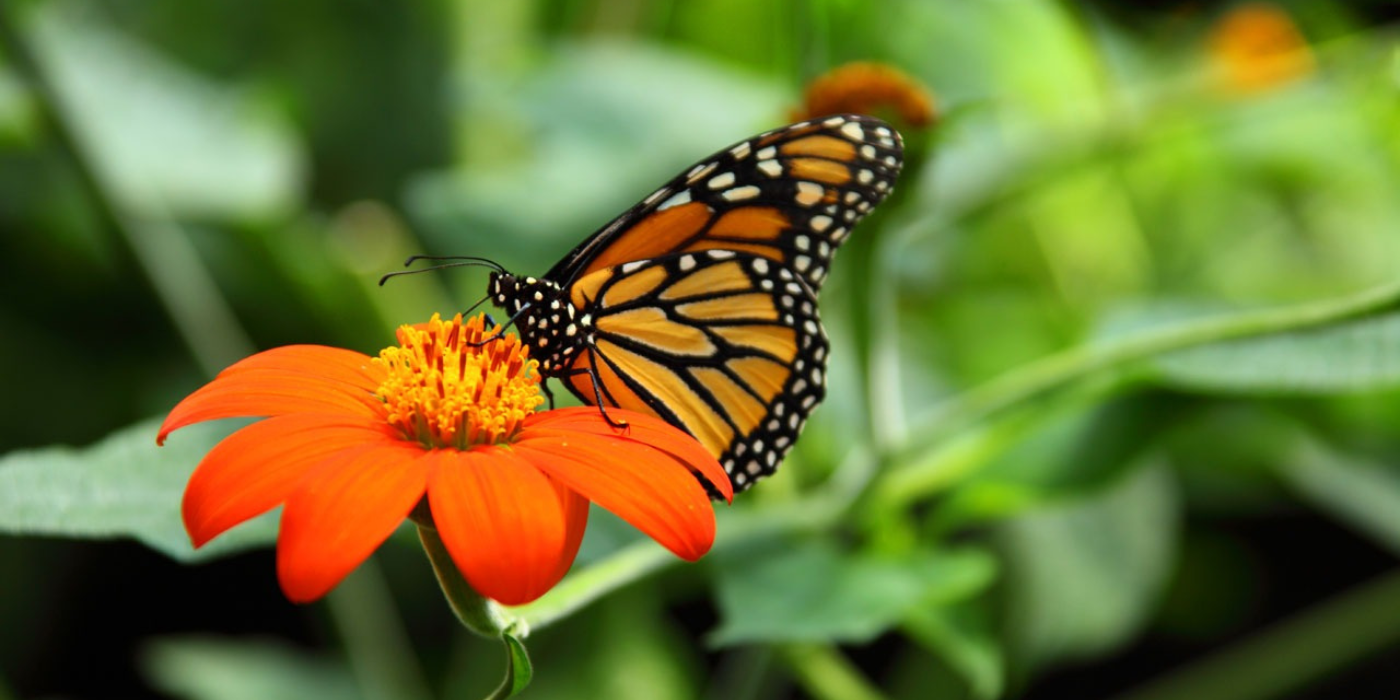
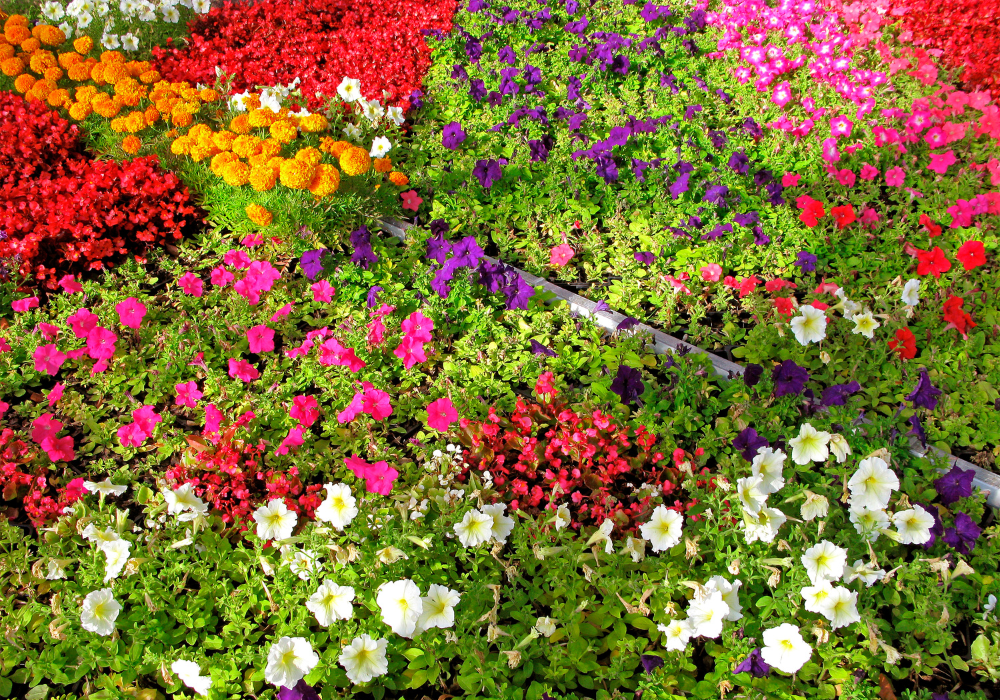
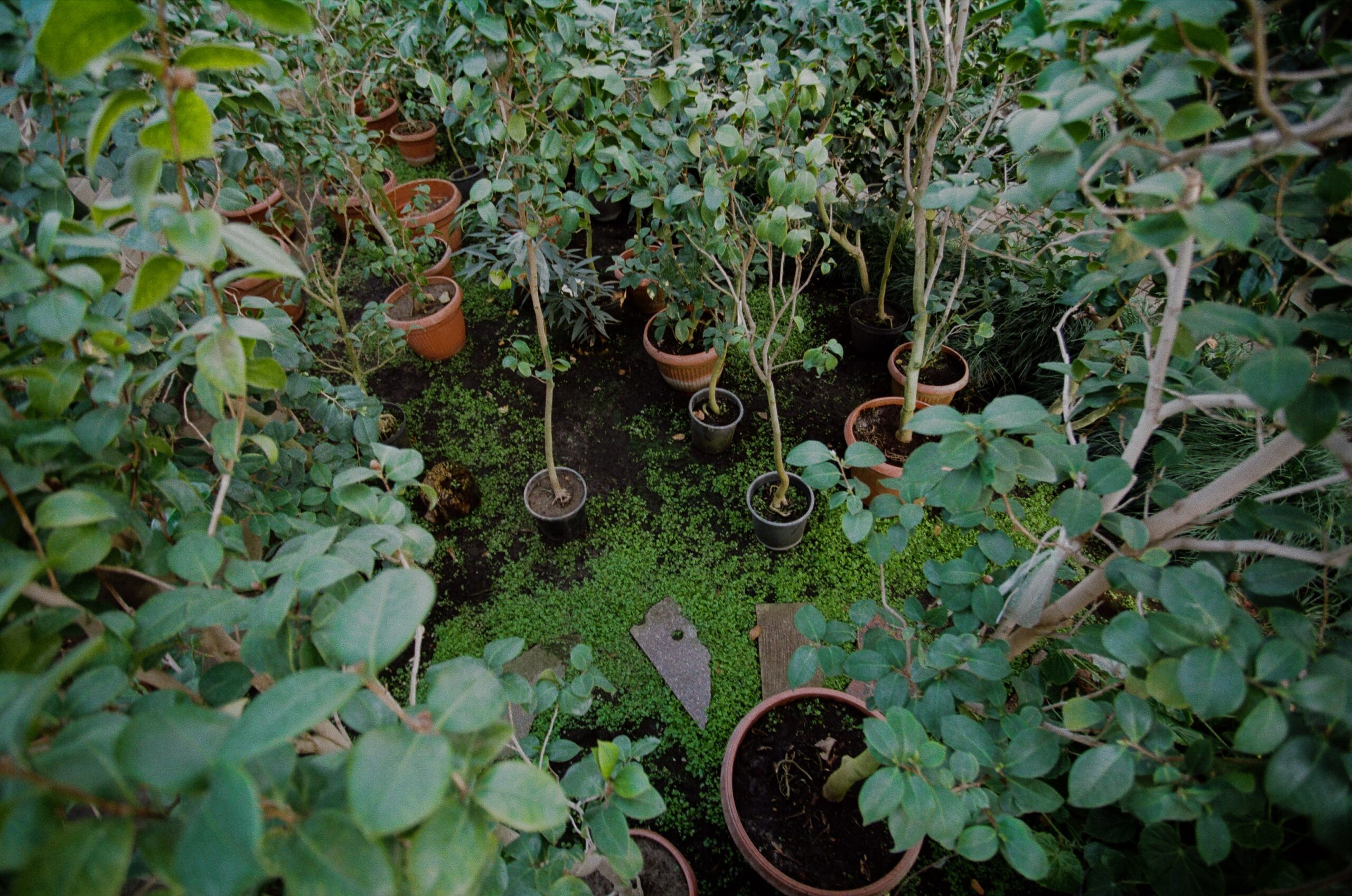 2. Prioritize biodiversity
2. Prioritize biodiversity